






Dear Angler,

Are you looking for a change in the New Year? We have plans to expand in 2023 and are seeking like-minded outdoor enthusiasts who share in our vision to bring our free publication to every town in America!
Do you want to work from home, be your own boss, and control your time and earnings? Then owning your own fishing magazine may be right for you!

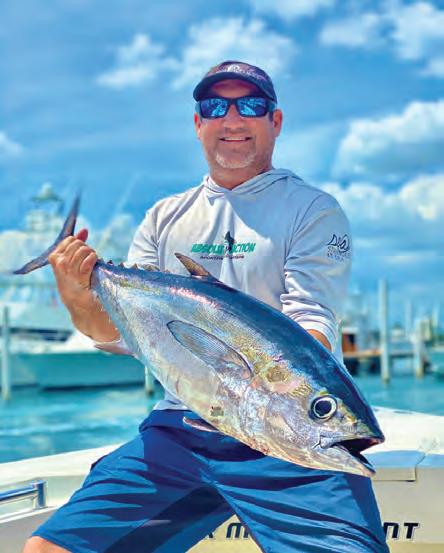
Our ideal candidate for this unique business opportunity:
• Loves the Outdoors
•
•
Three Years of
• Has
• Is a



If you or someone you know is looking for an opportunity to own their own home-based business and earn a living in the outdoor industry, please contact us at 321.777.2773 x 1 or email info@coastalanglermagazine.com.

Ask us if we have a franchise territory available near you! We have


throughout the US and abroad!
Ben Martin
Chief

With a combined national readership of over a million per month and distribution to over 11,000 businesses in four regions, Coastal Angler Magazine and The Angler Magazine are the preferred resources for anglers and outdoor enthusiasts. Our brand is well known throughout the fishing world, and our free monthly magazines are recognized as well-designed, thoughtful publications that provide newsworthy and entertaining information pertinent to the marine and fishing industries.
Be in Business For Yourself...But Not By Yourself. An exceptionally rewarding and fulfilling business opportunity, as a co-publisher of your area’s Coastal Angler or The Angler Magazine, you’ll enjoy the benefits of controlling your own time and future. Our proven franchise publishing system enables individuals with no prior publishing experience to publish a credible and profitable localized version of our award winning magazine. We provide complete training and on-going support to ensure your success.
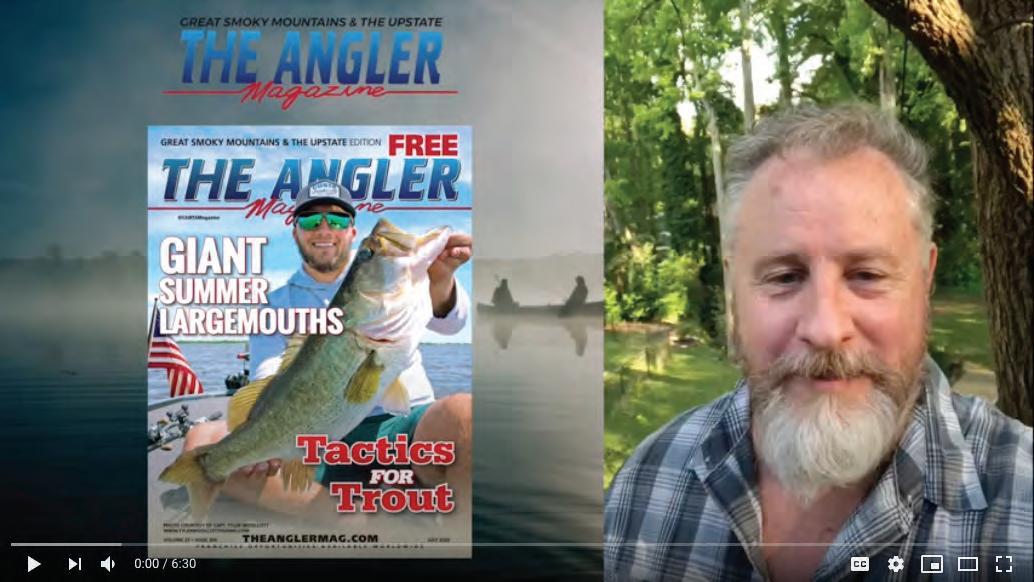

fun day of action packed fishing. I like light spinning like a GLoomis GLX PR844 with a 2500 Stradic or an 8-weight NRX fly rod with a Nautilus NVG 8/9
miles of the beach. I find the fish offshore tend to be larger, so I like to target them. A 3-pound mack will make a blistering first run that is reminiscent of a bonefish, and they are



birds working. That’s a tell-tale sign. Reefs and good hard bottoms that hold bait are great places to search, as well. These types of spots can be trolled or chummed to keep the action close to the boat. A standard chum bag will bring the school well within casting range for both conventional and fly fishermen. Just


Mackerel get a bad rap as table fare, as they are oily and can be strong tasting. That oiliness makes them perfect for smoking, and that, too, could not be easier. Simply fillet the fish, leaving the skin on. Salt them liberally and let them rest in the refrigerator for about an hour. Rinse the salt off and add some Cajun seasoning to the fish and smoke over indirect heat at 250 degrees for about two hours. It is done when
great on its own in a salad or rice bowl, and it’s fantastic when made into fish spread.
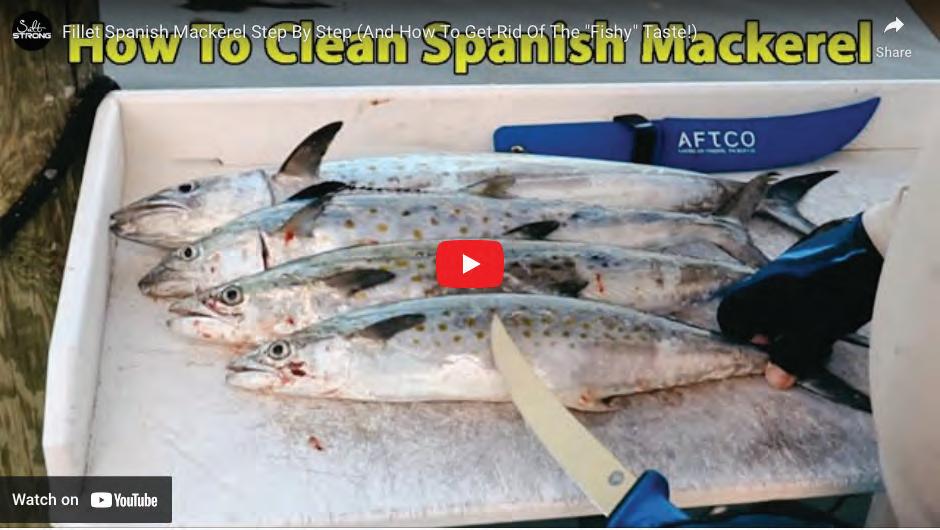
If you are looking for some hot action with minimal work, grab some wire and enjoy the return of the mack.
Will Schmidt is a seasoned tournament angler who has been writing about fishing for more than two decades.
The Xtreme Power Assist is engineered to bring the smooth, easy control of electric power-assisted steering to a wide range of popular boats, including pontoons, runabouts, RIBS, aluminum fishing boats and center consoles.

Read more at dometic.com


Hydraulic-electric and all electric steering advancements over recent years have taken steering ease and performance to new levels for a variety of high-end center consoles, power catamarans and other high-performance fishing boats.
But what about the throngs of inshore center consoles, flats skiffs, bay boats, pontoons, deck boats and other popular vessels traditionally driven with mechanical cable steering systems?
It’s for these types of boats that Dometic Marine recently launched Xtreme Power Assist (XPA) Steering, engineered to bring the smooth, easy control of electric powerassisted steering to a new class of vessel.
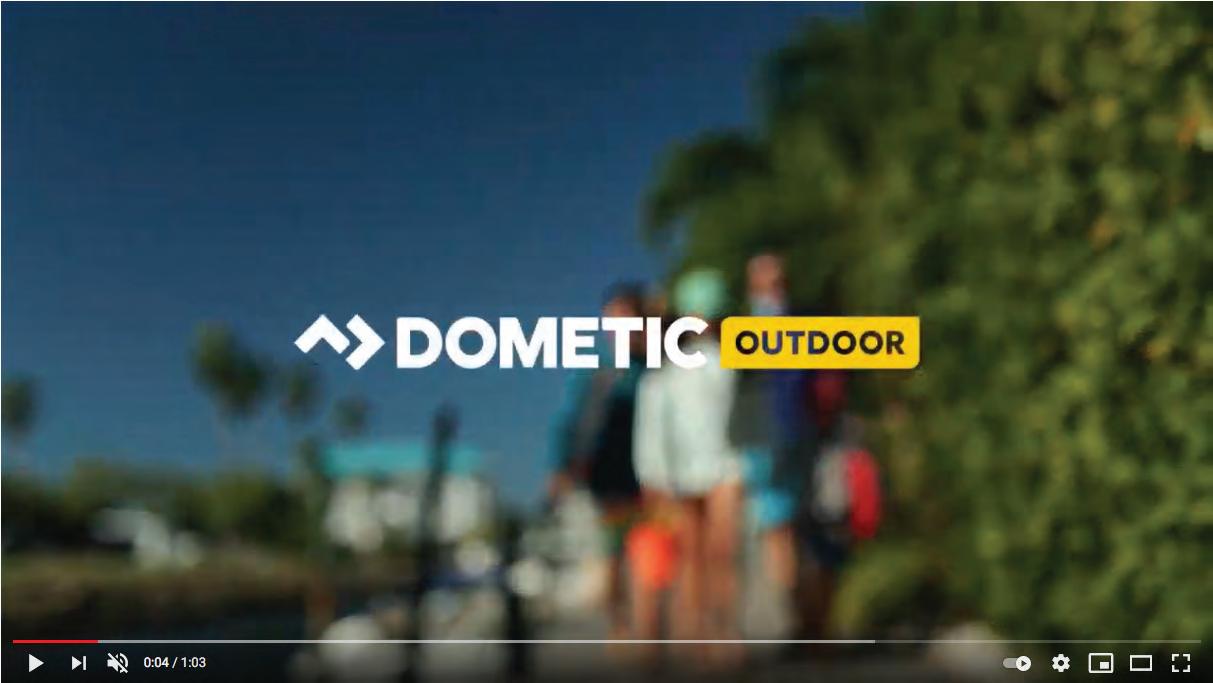
Dometic Xtreme Power Assist Steering is an affordable, easy-to-install solution that brings reduced steering effort and a more enjoyable driving experience to mechanically steered boats with single outboard power from 90 to 200 horsepower. It integrates with any existing SeaStar rack or rotary cable steering system, so there is no need to install new steering to take advantage of this breakthrough. It also works with either standard or tilt helms.
Xtreme Power Assist easily mounts to all major outboard brands and integrates with the boat’s mechanical steering. It reduces steering effort to levels similar to Dometic’s Electronic Power Steering, with quick response to the wheel and consistent steering effort from Starboard to Port. Once this system is installed, the mechanical steering cable now only turns the power assist unit, while the electric steering actuator actually turns the engine load.
This system differs vastly from competitive “electric helm” systems on
upgrade that will enhance the driving experience and customer satisfaction for a new and large segment of the boating market. It has been thoughtfully designed as a plug-and-play installation to serve both the OEM and aftermarket sales channels.
“This new product fills a very important gap in our family of marine steering products and the boating industry as a whole,” said Eric Fetchko, President of Dometic Marine. “We’re excited to be bringing all the benefits of power steering within reach of more boaters. The fact that Electric Cable Power Assist can be easily integrated with existing steering systems makes it even more of a win-win for boaters and the industry,” added Fetchko.
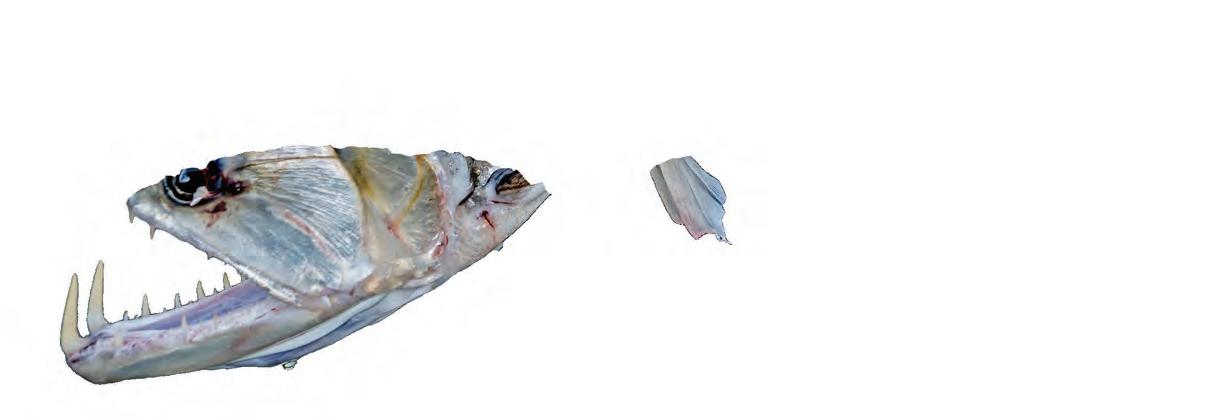
n September, I embarked on one of the craziest adventures I’ve ever experienced to fish for crazy exotic species on the Rio Guaviare deep in Columbia’s Mapiri Jungle. Just getting there was an adventure in itself. From Miami International Airport to Bogota, Colombia, we landed at 12:44 a.m. and got two hours of sleep before the shuttle picked us up a 4 a.m. We caught another flight into San Jose, Columbia, where we went into the buzzing



with a spare lower unit tied on top with a rope. I was accompanied by my cameraman Adrian, from Poland, good friends Jake, Derek, Karl, and our jungle guide Diego, from Chile.
We set out downstream and rode for hours, passing through two army checkpoints, before we reached our halfway point at 118 miles. We stopped for lunch and to refuel at an isolated jungle town only accessible by boat. As we creeped up muddy stone steps, we were
downstream. When darkness arrived, the jungle came alive. With a fully loaded boat, our driver did not feel comfortable navigating the rapids at night. The week prior, it had taken the life of an elderly man and swallowed his boat. So we stopped and our guide, Diego, traded goods with an indigenous Colombian man for permission to sleep at his house. Some opted to sleep in the boat. His wife prepared us a delicious dinner and tea.

We all tried our best to deal with the mosquitoes, stinging hornets and massive cockroaches to fall asleep. After many long hours, the sun finally rose over the thick jungle horizon, and we headed another 45 minutes downriver to reach camp, where we discovered there was more travel on the agenda.
We packed lighter for three days of fishing and camping at a sacred waterfall inhabited by one of the jungles tribes. After a quick breakfast, we gathered tackle and belongings and headed another 2.5 hours downstream to a small creek that would lead us to camp, and we fished our way there.
On my first cast, a 15-pound sardinata exploded on my popper boatside. Imagine a huge pilchard or shad but with sharp teeth and hyper-aggressive topwater strikes. Fully grown, Sardinata can weigh 25 pounds. This one threw the hooks, and fishing only got crazier from there.
I was throwing a 9-inch Countdown Rapala in Firetiger Rapala at the tree line and retrieving it to the boat. Almost every cast we hooked massive payara. This fish is similar to a tarpon, with silver scales, acrobatic leaps and a boney mouth that made hook sets difficult. Payara have long fangs on their lower jaw capable of slicing thick-scaled fish and fishing line with ease. They are without a doubt the most challenging, unique and aggressive jungle predators I’ve ever targeted. But I managed to
catch quite a few on fly and spin tackle.
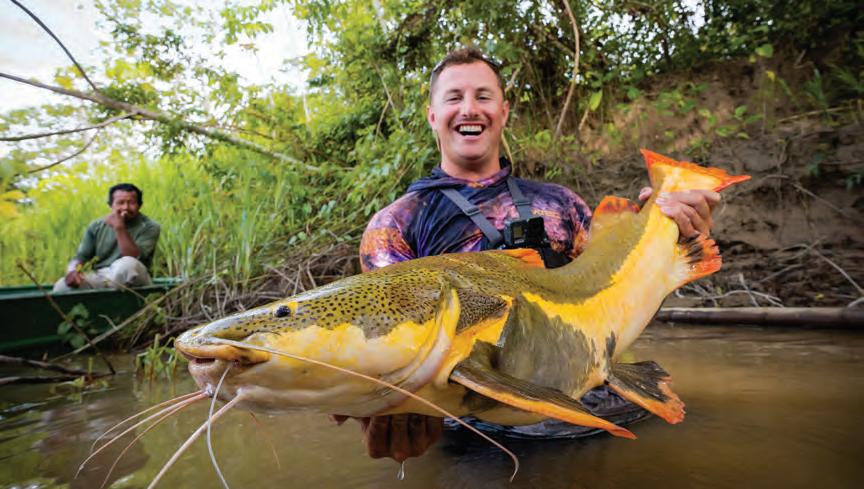

Another unique species was a matrinxa, a silver-scaled delicacy of the Jungle. They are omnivorous, sitting below trees, eating the dropping fruits and nuts. They also hit lures
and black with a blood orange/red underbelly. Black and red bellied pirahanas were in no shortage, either. After three days of fishing by the waterfall, we headed back up to basecamp for new species. We had some unexpected
on reaction with insane power. These fish were extremely hard fighting and some of the tastiest freshwater fish I’ve had. They have teeth like human molars for cracking hard nuts.
Red bellied pacu are another ferocious species we caught. They have a similar ambush style and diet to the matrinxa. They are equally aggressive and display gorgeous hues of purple
heavy rains that blew through, and with the water levels rising it busted our hopes to catch big peacock bass. But it opened a new door: catching monster catfish.
We spent mornings catching small Colombian baitfish called arenca and palometa on cane poles. They worked excellently live or cut for big catfish. I caught many new species
of catfish. One of the most unique was a ripsaw catfish. They have soft lips and a long face, very similar to a carp. They also had a sharp chainsaw blade for a lateral line, earning them the nickname “Caiman Killer.” Caiman can’t eat them because of their spiky sides, and these fish have no natural predators besides the indigenous people who eat them. I caught small tiger shovelnose catfish, as well as red tail catfish. Red tail catfish are one of the strongest fighting catfish I’ve ever encountered. It took three days of break-offs before I was able to muscle one up. It weighed 40 pounds.
Fishing the jungle is tough, and it is not for everyone. This trip scarred me with bug bites from head to toe, and I suffered many bee and hornet stings. It is not comfortable in any sense, but it is good for the mind. There’s no cell phone reception, you are stripped of everything, the only thing that matters is the present moment. For me it is the biggest adrenaline rush one can possibly have, traveling into the unknown and learning new fishing and culture.
Check out Ryan Izquierdo’s YouTube Channel, “Ryan Iz Fishing” for a series called “Jungle Jeopardy.” E-mail him at Ryanizquierdoyt@gmail.com with questions or to find out how you can go on one of these trips.
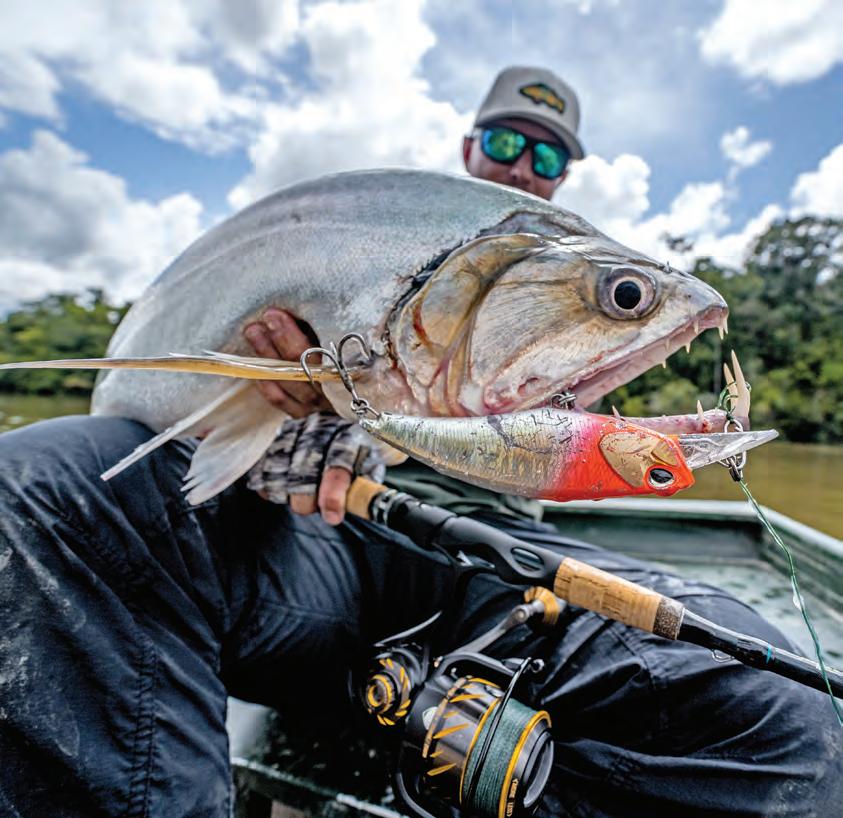





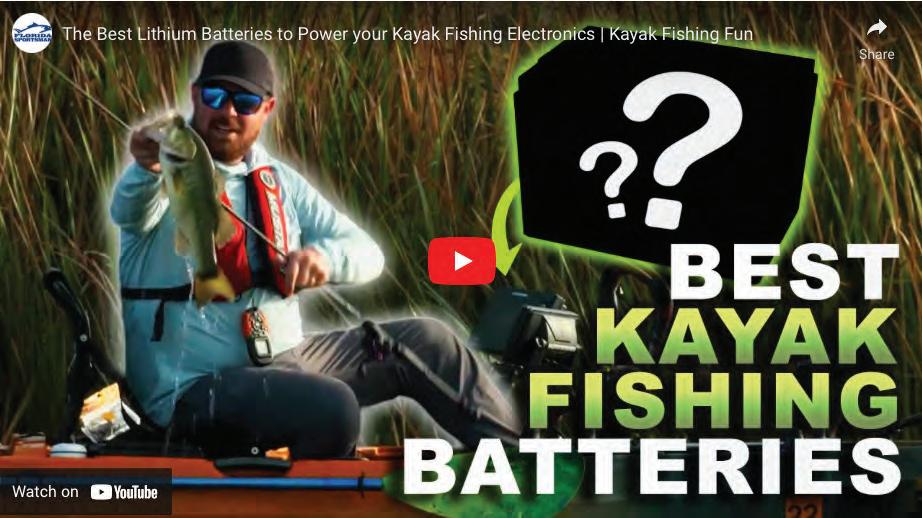

fishing is a time of transition throughout the southern waters, but there’s still a ton of action, both off-shore and near-shore. In fact, it’s a great time of year to fish bays and bridges. Of course, it’s also a transition time for those of us above the water as well, with the potential for glaring sun one moment and a chilly breeze the next. That’s why you need the protection and flexibility of FinTech® gear.
With FinTech, form follows function at an affordable price. The protective, durable FinTech line of apparel means you’re ready to go, regardless of your plan for the day.
Whether you’re hauling in a 12 lb. redfish on the boat, or hauling lumber in your truck, you’ll welcome FinTech’s high-quality UV protective fabrics and thoughtful designs that include marine-grade durability and detailing. With options like vented capes, well-placed pockets and hearty zippers, you can take your FinTech favorites from work to water without missing a beat.
FinTech was created to bring more performance-oriented technology to
affordable everyday apparel. With innovative design elements and special fabrics, FinTech created gear that delivers superior moisture wicking and UPF 50+ UV protection to shield you from the harshest of habitats, no matter the season. Consider the flexibility of the mid-weight, 100% cotton FinTech Beachcamper Flannel Shirt, or the Point Breeze Fleece Hoodie featuring UPF 30+ protection and a built-in protective liner.
FinTech’s full line includes everything from long sleeve t-shirts and cargo shorts, to collared work shirts and durable trousers. One of the most versatile pieces
in the FinTech line is the Long Sleeve UV Hoodie, offering maximum sun protection and double-brushed interlocking microfiber fabric. Enjoy essential comfort, durability and breathability all in one shirt.



With the added benefit of design detailing inspired by the land and sea, you’ll look as good as you feel with FinTech on.
MORE AT WEARFINTECH.COM

 By Gary Turner
By Gary Turner
There’s more to Alaska’s Kenai Peninsula than world-famous salmon runs. The saltwater fishing is also phenomenal, with species like halibut, salmon shark, flounder, yelloweye rockfish and ling cod being primary targets.
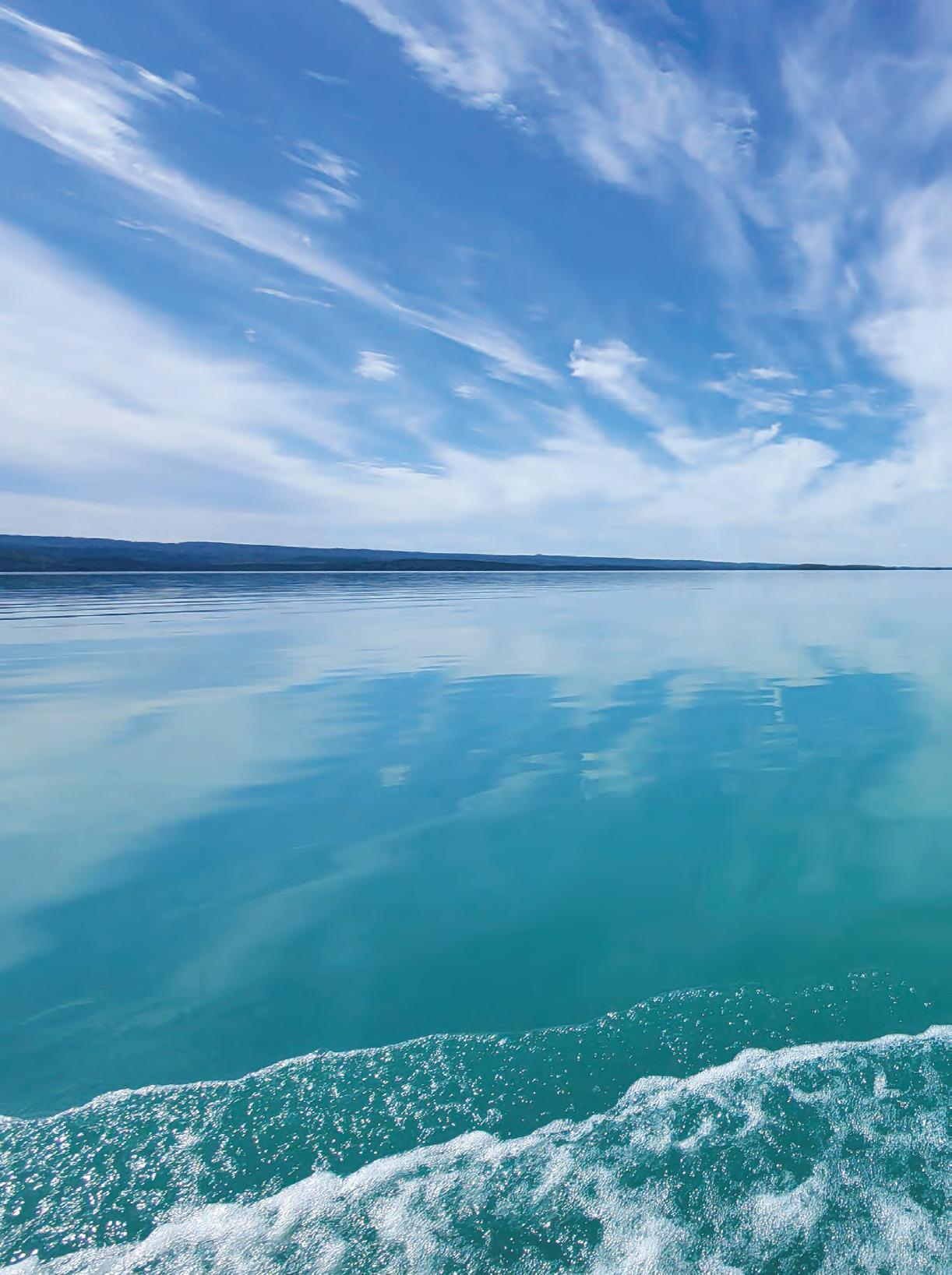
When you run out of Seward to Resurrection Bay, you might see some of the Deadliest Catch boats, and you might see multiple species of whale. We saw a lot of humpbacks this past summer. At more than 900 feet deep, with glaciers around the rim, the bay is aweinspiring.
There are several good charter operations. Some make long runs for big halibut, while some offer fishing that’s a little more local. Check with J Dock Fishing Co. in Seward for the latest fishing information and charters. If you’re more of a DIY angler, Miller’s Landing in Seward offers lodging and charters, and they also rent boats and fishing equipment. If you want this option, book early. I have mine booked for next year, already.
Homer is the Halibut Capital of the World, and it’s another great Kenai destination.



We went with some friends and got on some good Halibut! I’m new to the electric reels we used. You had to time the hook-set just right. It took several bites to figure it out, but we caught fish once we got the hang of it. I pulled one a good way off the bottom before it decided it wasn’t coming in and broke a 150-poundmono leader! We caught several good keepers and turned the smaller ones loose.
There are plenty of charters in Homer. North Country Charters is a great one that offers halibut and salmon trips. They will put you on some big halibut. My largest weighed 99 pounds, but North Country catches fish that are much larger.


If you want a long-run charter, check out Casino Charters. If you want to catch fish from the beach, check out Family Shore Fishing. They set you up with a guide, fishing rods and bait at Lands End, which juts out into the bay. Fishing low tide on the shelf, you can catch cod, flounder and halibut. We


filled a cart with cod and flounder in less than two hours fishing from shore. Then we went back another day without a guide and wore them out again!
Fishing in Alaska is just like anywhere else, once you learn what works, you can do it over and over. There are lots of different kinds of fishing there, but once you learn where and how to catch them, you can do it yourself.




On this past summer’s trip, as we were headed to the airport to go home,
we drove along Cook Inlet and spotted a school of beluga whales swimming the shoreline. You never know what you’ll see in Alaska. Some things are just so amazing!
I’m currently pulling together next summer’s trip to Kenai, and I’m making a short guide of things traveling anglers might want to know. Feel free to shoot me an email with questions.
For more information, contact Gary Turner at gary@purgeright.com.







Members of ‘A Band Of Anglers’ (ABOA) are passionate anglers and good people. We aren’t all world record holders or tournament pros. But we are all passionate about fishing. Members of ABOA are employees. We are investors. We are friends. We are brothers and sisters. We are anglers who love and protect the sport of fishing and the beautiful waters in which our fish swim and thrive. We have that weird gene that makes us wake up on a late winter morning thinking about fishing. We smile when we set the hook on a solid fish and feel our rod bend. And we LOVE to fish the patent-pending lures designed and made by Patrick Sebile and his friends.






















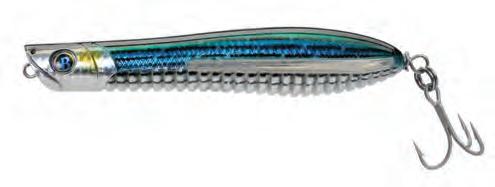













 TIM BAREFOOT
TIM BAREFOOT
November is traditionally the corner stone to true fall and the beginning of winter. Now is when the grouper spawn is in overdrive. We will see giant schools of cigs and sardines in nearshore waters and giant stacks of beeliners (vermillions) in offshore waters. All are perfect targets for all gamefish.



The water temps will start to dive off in waters right on the beach, and the chill will start to creep slowly farther offshore when we get closer to December. Thanksgiving week is always the moment of truth; it’ll tell you where the “line” of 68-degree water is. Right up to the “line” is off limits to the kings, dolphin and tuna, and everything inside that line is gold.
Yes, I like to fish light line for all the pelagics, but sometimes the light line is a real distraction. I look at the light line like this: If you get a bite from a dolphin tuna or wahoo, it’s a great thing. But if you get a king on light line, it’s a significant period of time



when you can’t bottom fish. I want to bottom fish more than I want a king or dolphin. Go ahead, call me a fish snob, but I am fishing for all the things I like to eat. Period. Full disclosure: a king is delicious, but only when FRESH!

Inside the cold water “line” will be where the grouper and big snapper are (in my humble opinion), and that’s what I’m fishing for. The wahoo rarely venture inside the 68 degree water, and prefer the 69-plus degree line. Fish right on the line, where it goes from 67.8 to 69-plus degrees, and especially if you can find bait and/or structure like ledges or wrecks on this “line.”
Now is also the time to run up and down the “line” with highspeed stuff to find where you get bites. This is a great way to locate an area that holds fish. A ROFFS chart will put you in a vicinity of the fish, but after that it’s up to you to locate specific areas of fish that are concentrated enough to anchor on (or put the Rhodan over) to bottom fish while light lining.
As I have said for many years now, why troll when you can catch all the species you are looking for while bottom fishing at the same time on the light line? Learn how to fly the kite and fish a live bait under a cork while anchored and chumming. This is the most productive way to come home with the best groceries, in my opinion.
Check out Tim Barefoot at barefootcatsandtackle.com.


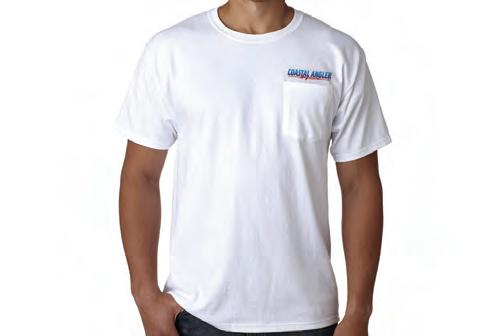




Florida has some of the best tarpon fishing in the world. With peak fishing largely dependent on huge seasonal migrations, summer is prime-time for silver kings in the Sunshine State.

So what’s a tarpon addict to do when the fishing slows after the flurry of the fall bait runs? There are still resident tarpon on the flats and in the bays and canals, but there’s another option. The peak tarpon season is just now beginning down in Costa Rica. Book passage to one of the lodges at the mouth of the Rio Colorado, and you’ll likely experience the kind of action that will exhaust you physically and emotionally.
For about half the year, from roughly November to April, jumping 20 fish a day in the 60- to 150-pound range is not unusual at the Rio Colorado Delta. But don’t go down there expecting to sight fish clearwater flats. The delta and the river itself are a brown plume that flushes into the Caribbean Sea about 15 miles south of the Nicaragua border. This is big, turbulent water, and that’s

why the fish are there. Baitfish swarm to feed in the nutrient-rich freshwater flowing from the jungle. Tarpon pile in to take advantage of the easy meal. This is a very good scenario for anglers armed with either fly rods or conventional tackle.
Summer rains bring high water to the river, which lasts into the calmer seas of fall. There is a layer of dirty freshwater that spreads out over a denser layer of clear Caribbean saltwater, which creates perfect conditions for tarpon to feed. In such conditions, large tarpon can be seen rolling everywhere in the main channel. They also push up into the river itself on high water, which opens the opportunity to fish in a jungle river setting. That’s an adventure in itself.
Late winter into spring is the dry season. The bait moves offshore, and the tarpon

follow their food source. The fishing remains good, but the tactics change. It becomes more of a nearshore fishery. Tarpon can still be seen rolling on bait, but you’ll need to find the bait first, which means chasing birds.
After a few backbreaking days battling big tarpon, most anglers relish the chance to run up the river to sample the backcountry tributaries and lagoons of the Rio Colorado. The scenery is gorgeous, and the light-tackle fishing can be spectacular.
During the winter, snook push up into the river in huge numbers. These are mostly 5- to 10-pound fish that are a blast with light tackle. Anglers can expect to do battle with dozens of them on a good day, and there’s a chance of being surprised by a 30-pounder or a Rainbow Bass (guapote), which is just one of the strange exotics in the river.
For more information, visit costaricafishingreport.com.
PHOTOS COURTESY OF SILVER KING LODGE



Suzuki Marine, USA LLC has launched two new additions to its powerful line-up of outboard motors — the new-for-2023 DF350AMD and DF300BMD V6 4-strokes. Suzuki Marine USA unveiled these new models today before the boating industry, press and boating public during the 2022 Fort Lauderdale International Boat Show.
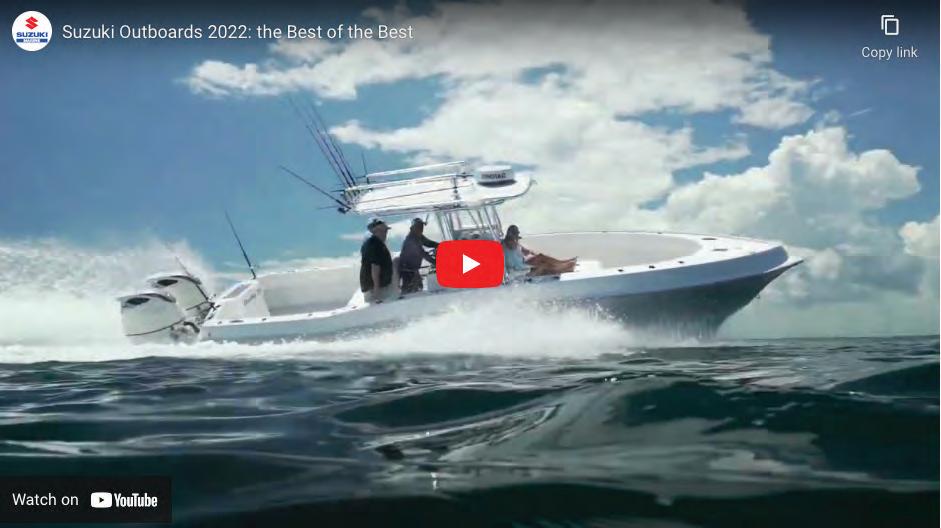
“We’ve made these flagships of our fleet even better by adding some innovative new features that improve performance, durability and ease of rigging on a wide variety of boats,” said George “Gus” Blakely, Suzuki Marine Executive Vice President Sales & Service. “We listened to our boat building partners, our dealers and our customers and used their input to make our best motors even better. This has always been the Suzuki way,” added Blakely.
These 350 and 300 horsepower models with contra-rotating twin propellers are the first Suzuki outboards to offer the benefits of advanced integrated steering. Integrated steering allows for more streamlined rigging of these V6 outboards on a range of inshore, offshore and freshwater boats, while also providing a cleaner appearance in the motor well. Because integrated steering eliminates concerns about interference and clearance issues created by external steering cylinders, boat builders can more easily rig these popular outboards on a variety of hull types in single or multiple engine configurations. Integrated steering also reduces the possibility of the steering cylinder hitting the motor well if the outboard is tilted too far forward.
Suzuki has also engineered a new lower gear case for the DF350AMD and DF300BMD (also available on all five series 350A/300B models), designed to enhance durability, increase top-speed performance, improve fuel efficiency and make maintenance and service easier. The new design delivers superior gear lubrication and maintains the gear oil at a lower temperature, increasing durability and reliability over the long run — even in the toughest operating conditions.
The external surface area of this new gear case has also been reduced and reshaped, allowing the lower unit to slice through the water with less resistance. By doing this, Suzuki is able to deliver a marked improvement in both fuel efficiency and top-end performance for today’s boats. This streamlined gear case has the added benefit of reducing the amount of gear oil required from 3.2L to 2.8L. This new gear case also features a new oil passage that allows users to easily change the gear oil with Suzuki’s gear oil changer without having to lift the boat. This improvement will
make it easier for boaters to stay on top of scheduled maintenance and keep their new Suzuki’s running strong season after season.
These new flagship models offer all the advanced technology and performance boaters expect from Suzuki’s popular DF350A and DF300B models (which will still be available in their original configuration). In addition to the proven performance and efficiency benefits of Suzuki’s dual-prop system, these motors boast a long list of features including a unique dual-louver air intake system, dual fuel injectors, variable valve timing, a self-adjusting timing chain, offset driveshaft design, Suzuki Lean Burn Technology, and more.
To learn more about the new DF350AMD and DF300BMD V6 4-strokes, or Suzuki Marine’s industry leading line-up of outboard motors from 2.5 to 350 horsepower, contact Suzuki Marine USA headquarters at (813) 687-7200 or visit www.suzukimarine.com.
About 50 years ago, Ralph Vodicka lost one of his favorite rod and reel combos when his boat capsized in North Carolina’s unpredictable Oregon Inlet. Recently, Vodicka was reunited with his 9-foot rod equipped with a Fin-Nor 4 spinning reel, and it still works!


Here is a brief recount of the amazing story reported by Summer Stevens in The Coastland Times
In fair weather in the early 1970s, Vodicka and three buddies attempted to return through Oregon Inlet after fishing off Hatteras National Seashore in a 17-foot 1966 Boston Whaler. The outgoing tide colliding with incoming rollers created rough conditions, even for a large trawler the anglers watched navigating the inlet. Vodicka was faced with a decision. They could either wait for the tide change, which would force them to make their run in the dark. Or they could go for it.
“Waiting it out would put us in the middle of the night,” Vodicka remembered. “We decided
that the best choice was to race on in while we could see. I told everyone, ‘Hold on, don’t move. We’ll ride on the back of one of the breaking waves. Even if it takes a little water, it’ll be ok.’”
In the middle of the inlet, as they were taking on water, a line caught in the prop and it stopped turning. The boat was at the mercy of the tide and waves, and an 8-foot breaker flipped it end over end. The story of the exciting rescue is reported in detail in The Coastland Times. It involves the captain of an old 25-foot boat and his grandson risking great peril to time the waves and rescue each of the anglers one at a time. Vodicka’s badly damaged Whaler was later recovered, and he lost a bunch of fishing gear, including the rod and reel that began this story.
The details are lost to time, but apparently the Fin-Nor reel and the rod were hauled up in a commercial angler’s net. The unique set-up ended up doing decades of duty as a showpiece on the wall in Dennis Dudley’s Elizabeth City, North Carolina home.
The reel was equipped with a custom plate engraved with “Ralph E. Vodicka,” and Dudley tried to locate the Fin-Nor’s owner when he received the rod in the mid-1970s. Dudley’s phone book searches came up empty, and the search was forgotten…until recently.

Dudley, 78, remembered the mystery of the reel’s owner while going through his possessions. A quick Google search turned up Vodicka, who is 89 and living in Raleigh, N.C. The men met to eat lunch, and Vodicka was reunited with the beautiful rod and reel he lost half a century ago.
Amazingly, the antique Fin-Nor is already back in action. Instead of hanging it on the wall, Vodicka had it serviced and used it on the Neuse River over Labor Day weekend.
“It worked. It worked fine,” he said. “It’s amazing that after 50 years you get your favorite rod and reel back.”
To read the whole story, visit www.thecoastlandtimes.com.





Kona is a term used in the Hawaiian language to indicate the leeward side of any island. In the fishing world Kona can only be one place, the Kona Coast of the Big Island of Hawaii, where more giant blue marlin are caught than any other destination on the planet.
Worldwide, most of the big-name marlin hotspots have a season. Marlin are present for a month or two, and then they are gone. On the Kona Coast, big Pacific blue marlin might be there any time of year. The best bite does coincide with summer spawning behaviors off the Big Island, but any day of the year anglers have a better chance of hooking up off Kona than anywhere else in the world. From Big Island records, marlin weighing more than 1,000 pounds, or “granders,” have been caught in every month of the year except November.
Why is it that blues are drawn to this chunk of volcanic rock out in the middle of the Pacific Ocean, and more specifically the leeward side of one island in a 1,500-mile archipelago? The answer lies within the question. The Big Island is the largest Hawaiian island. It has a total area of 4,028 square miles, making it more than twice as large as any other island in the chain. It is also the southern and easternmost Hawaiian island. Combined with the prevailing northeasterly tradewinds, the topography of the Big Island creates interesting currents attractive to pelagic big-game species.
The Big Island above the tide line is the tip of an enormous chunk of volcanic rock. There is no shallow continental shelf stretching out for miles like there is off the mainland United States. Just 3 miles offshore, the waters off the Kona Coast drop into depths of more than 6,000 feet. Thus, the fishery is dominated by big pelagics. Within sight of land, there’s opportunity to tangle with six species of billfish, six species of tuna and ono (wahoo). That’s not to say
By CAM Staffthere aren’t other fish to catch. Kona has good bottom fishing, and mahi-mahi thrive in the warm waters.



Obviously, nearshore fishing in Hawaii is not the same as off the mainland. It comes as no surprise to see what many would think of as bay boats trolling big-game gear. This can be attributed to the depths just off the island, but it also has to do with the weather. The five massive shield volcanoes that form the big island buffer the Kona Coast from wind and rain. Conditions on the surface are often calm as a lake off the western side of the Big Island.
Conditions under the surface are a different story. Herein lies a phenomenon that can make the big-fish bite phenomenal off Kona. The winds and topography generate miles-wide swirling currents known as cyclonic eddies. In these cyclonic eddies, deeper nutrient-rich water is sucked up into the warm surface layers, creating localized patches of ocean that are biologically more productive. Blue marlin are known to prefer the warmer upper layers of the water column. Nutrient rich water attracts prey-sized fish. Researchers were not able to definitively answer why, but a study conducted with the Hawaii International Billfish Tournament showed these cyclonic eddies have marked effect on the ability of anglers to catch blue marlin. This may be true for other pelagics, as well.
Now this may all read like the perfect storm for incredible fishing, and it is. But it is still billfishing. Anywhere…even when the bite is on, hooking a big blue is like gambling. One might spend days on the water without a raising a fish. Then again, first timers hook-up with 300- to 500-pounders all the time. And no one knows when that grander might slash into the spread.

It was a big-fish year for the 74th annual Destin Fishing Rodeo. A record-breaking wahoo and an enormous Warsaw grouper were highlights of the monthlong competition, which kept the docks at AJ’s Seafood & Oyster Bar buzzing in October.

Started in 1948 to draw tourists to “The World’s Luckiest Fishing Village,” the rodeo is an annual event and a Florida Gulf Coast tradition that features daily weigh-ins throughout the month of October. There are divisions for pretty much any species you can think of, as well as for anglers on charter boats, private boats, kayaks, paddleboards and from shore.
Here are a couple of the hundreds of fish that kept the crowd at the docks entertained this fall.
On Oct. 1, the opening day of the rodeo, Derrick Dover got things started with a bang when he brought a 101-pound wahoo to the scales. It was the biggest ’hoo on record for the history of the rodeo and broke a 12-year-old record of 98.2 pounds, which was set by angler Omar Breiz in 2010.
Dover, his dad Tony and his brother Andrew were fishing from their boat “Muscle Memories” about 30 miles southwest of Destin when they trolled up the monster wahoo. The fish hit a Jag-A-Hoo Blue Water Candy lure, according to the Destin Log.
The Florida state record wahoo weighed 139.56 pounds. It was caught off Marathon in the Florida Keys by George Von Hoffman in 1960. The IGFA all-tackle world record wahoo weighed 184 pounds. It was caught off Cabo San Lucas, Mexico by Sarah Hayward in 2005.
It wasn’t a tournament record, but a nearly 350-pound Warsaw grouper hanging from the scales was certainly a highpoint of this year’s rodeo. The giant grouper had an official gutted weight of 333.8 pounds, making it the second largest Warsaw ever entered in the tournament.
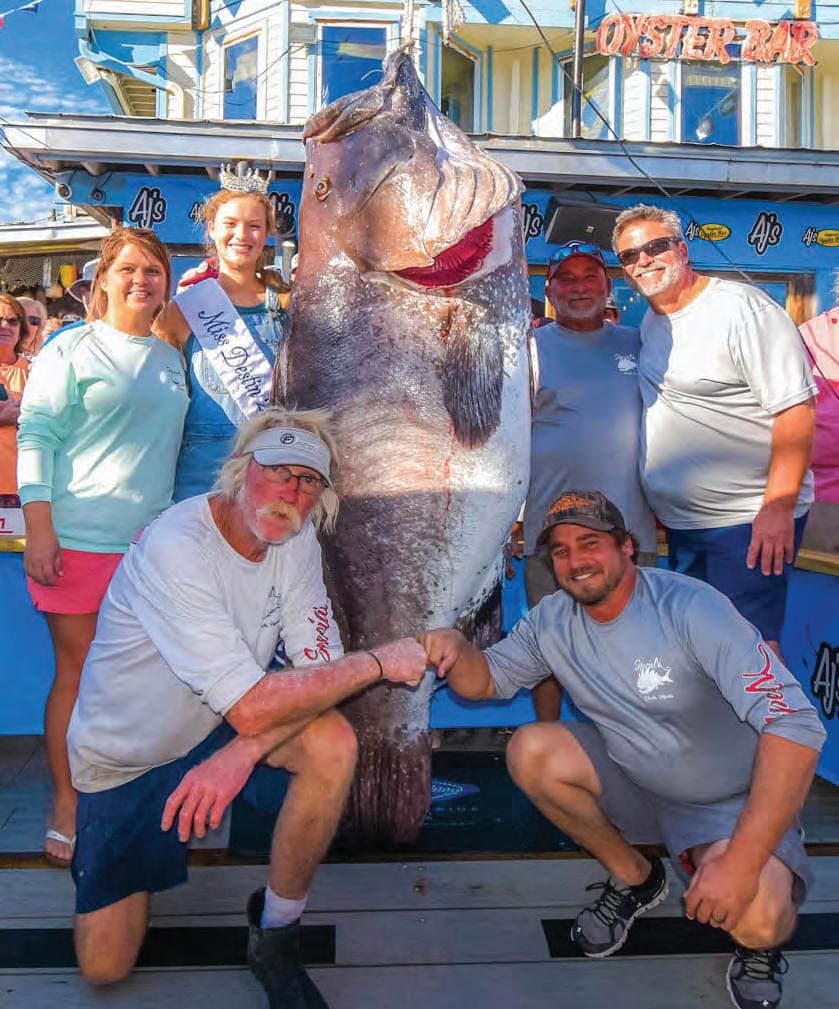
Garrett Thornton was the angler who hauled in the big fish. He was fishing with Capt. Kyle Lowe aboard the charter boat “Special K.”
Lowe told the Destin Log that he has known where the monster grouper was since last August. On trips for snowy grouper, the big Warsaw kept eating fish off his clients’ lines. Lowe kept that fish in his back pocket for Thornton, promising they would go back and catch it during the rodeo. They took heavy tackle and did just that on Oct. 9. Lowe said they dropped one bait on one rod and the fish hit within 15 seconds.
“It took 30 minutes to get him to the top, but then it took over an hour to figure out how to get him over the side of the boat,” Lowe told The Destin Log. “It took all five of us.”

The tournament record Warsaw weighed 358.8 pounds, gutted. It was caught by John Harden in 2003. The state and world record Warsaw grouper weighed 436 pounds, 12 ounces. It was caught by Steve Haeusler out of Destin in 1985.
To read more about the Destin Fishing Rodeo, go to destinfishingrodeo.org.


in south Florida brings an awesome collision of ballyhoo and sailfish that makes for some of the best fishing of the year. It’s also the time of year for some of the richest and most fun tournaments. If you’re interested, right now is the time to register. Here’s a list of some good events:
Nov. 30 – Dec. 4, 2022 Dust ’Em Off Sailfish Warmup For
Lauderdale
December 1-4, 2022 Pirate’s Cove Sailfish Classic Pirate’s Cove Resort & Marina, Port Salerno w ww.piratescovesailfishclassic.com
December 2-4, 2022 Islamorada Sailfish Tournament 1st Event of the Florida Keys Gold Cup Sailfish Championship Whale Harbor, Islamorada w ww.islamoradasailfishtournament.com
December 7-10, 2022 Stuar t Light Tackle Sailfish Tournament Stuar
stuartsailfishclub.com
December 16-18, 2022 Islamorada Junior Sailfish Tournament Islamorada • fishnbully@msn.com
January 5-7, 2023 86th Annual Silver Sailfish Derby Sailfish Marina, Singer Island westpalmbeachfishingclub.org

January 6-7, 2023 Fish for Holly Sailfish Tournament Islamorada
fishforholly.com
January 11-15, 2023 Operation Sailfish Leg One of the Quest for the Crest Sailfish Series
January
January
January
February
April



Situated riverfront and surrounded by the natural springs of King’s Bay, Plantation on Crystal River is an ideal setting for travelers of all ages and interests to enjoy endless outdoor activities. From boating and fishing to scalloping and wildlife encounters, visitors from around the globe travel to Florida’s Nature Coast to enjoy the organic assets of this dynamic destination. And before or after these unique activities, guests can enjoy the full-service restaurant, lobby bar and tiki bar conveniently located on property. For international travel ers, transportation is convenient with nearby international airports, including Tampa International Airport only 70 miles away, and Orlando International airport just 90 miles away. To follow is just a sampling of the abundance of available outdoor pursuits.
With Central Florida fishing at its finest, Plantation on Crystal River is located alongside the Crystal River inlets and Kings Bay, just a short dis tance from local lakes and the Gulf of Mexico. Whether by land or by sea, fishermen can cast a line for bass, grouper, snook, flounder, redfish and oth er popular sport fish. At the end of a successful day of fishing, Plantation’s chefs will be happy to prepare the fresh catch for the guest’s dining pleasure.
There is no better place to go scalloping on Florida’s Gulf Coast than Plantation on Crystal River. Taking place in shallow waters, scalloping is a fun family activity that only requires a snorkel, net and a pair of fins; no previous experience is needed. Scalloping does require a special permit, but licensed group tours and charters are available for those without a license. Scalloping season is typically July 1 to September 24.
Guests can tee off on the resort’s traditional Florida-style 18-hole cham pionship course. Surrounded by native plants and oaks, the championship course challenges guests with a number of difficult fairways and waterways, including the course’s signature No. 11 hole. The 9-hole Executive Golf Course is a great place for beginners and experienced players to sharpen their golf skills. The Original Golf SchoolTM at Plantation on Crystal River accommo dates players of all levels, with experienced professionals offering on-course instruction, with no more that four students per professional instructor.
Plantation on Crystal River’s Adventure Center & Dive Shop provides guests with a once-in-a- lifetime opportunity to swim and interact with threatened West Indian Manatees in the waters of Crystal River and Kings Bay. Snorkelers will find many of the gentle creatures in the crystal- clear spring waters migrate during cooler winter months with some that stay year-round. The manatees can also be easily observed from any part of the Plantation’s expansive sea wall and gazebo point.
With more than 25,000 accessible acres of waterways, including Crys tal River and Kings Bay, Plantation on Crystal River is a boater’s paradise. In addition to scenic river tours from Plantation Adventure Center & Dive Shop, kayaks, jon boats and pontoon boats can be rented by guests who want to explore on their own.
Countless on-property amenities also provide entertainment to guests at Plantation on Crystal River. Highlights include a scenic, lagoon-style swimming pool overlooking the river, sand volleyball court, horseshoes, shuffleboard, oversized outdoor chess and checkers and a regulation cro quet court. Nearby attractions include Three Sister Springs State Park, Crys tal River Archaeological State Park, Homosassa Springs State Wildlife Park, Coastal Heritage Museum, Weeki Wachee and the Yulee Sugar Mill Ruins State Park.







In October, the Florida Fish and Wildlife Conservation Commission opened the application process for recreational harvest of goliath grouper in Florida state waters. Harvest of the species was banned when the fishery collapsed, and the 2023 spring season will be the first time since 1990 that recreational anglers will have an opportunity to keep a goliath grouper for the table.

The harvest will be very limited and tightly regulated, and permits will be issued by random drawing of applicants who applied during the Oct. 15-30 deadline. The cost to apply was $10 plus fees and permit at GoOutdoorsFlorida. com. Details for this limited, highly regulated harvest include:
•Total recreational harvest of up to 200 goliath per year, with a maximum of 50 from Everglades National Park.
•A goliath harvest permit and tag, issued via a random-draw lottery ($150 for residents, $500 for non-residents, plus
fees) are required to participate. Permits and tags are non-transferable and no exemptions apply.
•A limit of one fish per person per open season with permit and tag.
•An open season from March 1 through May 31.
•Hook-and-line as the only allowable gear.
•A slot limit of 24-36 inches total length.


•Post-harvest requirements including proper application of the tag, reporting harvest data and submitting a fin clip for genetic analysis.
•Harvest will be permitted in all state waters except those of Martin County south
through the Atlantic coast of the Keys, all of the St. Lucie River and its tributaries, and Dry Tortugas National Park.
•Harvest will continue to be prohibited in federal waters.
“The highly regulated, limited take of goliath grouper is an exciting and unique opportunity to provide access to this resource after decades of closure, and we believe limited access is sustainable,” said FWC Commissioner Robert Spottswood. “We also look forward to collecting the post-harvest data to help guide future management decisions for this species.”
This opportunity is intended to provide additional access to this fishery while balancing the values of various stakeholder groups. Adult goliath grouper will continue to be prohibited from harvest statewide as well as goliath in heavy dive ecotourism areas. This limited harvest is not intended to address fishing depredation concerns.
For more information about the goliath grouper harvest permit and details on the permit lottery and eligibility requirements, visit FWC’s Goliath Grouper Harvest Permit webpage.




 PHOTO BY D.L.
PHOTO BY D.L.
So, you’ve booked the fishing trip of a lifetime and it requires a long flight. The excitement builds as you dig through the house for all the things you will undoubtedly need to make this the best expedition ever. Then it hits you. How can you possibly get all this absolutely necessary gear from the closet to the water?
Well, when it comes to fishing gear and tackle, all of the airlines have their own restrictions and requirements. The first step is to check with your carrier to find out exactly what the rules are. The Transportation Security Administration (TSA) allows breakdown travel rods in the cabin as carryon items, but longer one-piece rods such as heavy trolling rods must be checked as sporting goods. Smaller hooks and tools are also allowed, some as carry-ons, but use common sense to avoid a potential cavity search. A 28/0 shark hook is going to get confiscated if you try to carry it on the airplane, and it might land you in airport lock-up. The safest bet, which avoids the likely conversation with a TSA official at the security gate, is to just check lure boxes and anything else sharp.

At some point, it is worth considering what can be left behind. Good charter companies will have pretty much all the gear you need. And although it might not be as awesome as what you own, using what is available or buying gear on-site can save a whole lot of hassle.

If you simply must have your rod
or if you’re going it alone without a guide, rods should be packed carefully. Use hard tubes to protect your checked rods, and consider losing the tube for carry-on rods. For some reason, some airlines don’t like rod tubes as carry-on baggage, and none of them like metal ones. Your rods can be reasonably safe in a rod socks and zip-tied together, and at least you will have them with you at all times.
Pack expensive reels as carry-on if space permits. If they are too large and must be checked, put them in a box and pad them well with socks. Also pack as carry-on the essential items that will get you on the water for a day or two if your luggage is lost. A light raincoat, your sunglasses and lucky hat should remain with you at all times. Also, a single set of clothing suited to your destination is a good idea. You wouldn’t want to be wading the flats in the Bahamas wearing the blue jeans you flew in, and Superman Underoos are a poor substitute when Alaskan weather calls for long underwear under your waders.
The final tip for traveling with your gear is to be patient and be prepared. Some flights to some destinations see anglers traveling with their gear all the time, and no one will blink an eye. But there’s a good chance someone in blue will mistake your rod for a rapier. At this point it’s time to be polite and have an explanation ready. Getting defensive with airport security is a quick route to a monumental headache.
hat’s quite a headline for a 17-year-old high school student from Clewiston, Fla. who loves bass fishing.


I spoke with Hilary while she was in Palatka, Fla. preparing to fish the Florida Bass Nation tournaments on the St. Johns River, and her enthusiasm and passion for the sport of bass fishing were impressive.
Last year, at 16, she finished fifth at the State Championship of the Florida Bass Nation with a total weight heavier than 19 pounds. She’s hoping to do even better this year.

I asked her if she could remember when she first started fishing, and she laughed as she guessed that she was “probably only 2 years old.” After all, she does come from a pretty well-known family of professional bass fishermen.
Her grandfather, the legendary Roland Martin, is one of the greatest bass fishermen of all time. Her father, Scott, won the 2011 Forest Wood Cup Championship, and also has 45 topten finishes and eight tour victories in the FLW and hosts the Scott Martin Challenge.
But things are different today than they were in the past. Today, social media is the key to reaching your audience, and Hilary has done an incredible job on both YouTube, with over 100,000 subscribers, and Instagram with 103,000 followers.
Most of her videos are bass fishing, although she’s had some very interesting saltwater fishing videos, as well.
Hilary said she started taking bass fishing seriously when she was 15 years old, and at 16, joined the Florida Bass Nation Series.
She has her own bass boat, a 20’ Skeeter FXR, with a 250hp Yamaha, but she also fishes out of her dad’s boat from time to time, because, “it’s got all the goodies,” she laughed.
Her biggest bass, a whopping 9.1-pounder was caught flipping a black/ blue Sweet Beaver along the edges of cattails on Lake Okeechobee when she
was only 14 years old. She hopes to break that personal best soon.
Her fishing arsenal includes a Favorite Phantom Series fishing rod, a Shimano Curado reel and braided or fluorocarbon line, along with her favorite bait, a Zoom Speed Worm.

“I was fishing out of a kayak and I saw this big boil not very far away, so I threw my Speed Worm just past the mark,” she recounted. “I started a fast retrieve when a big bass came up and just exploded on it. That fish drug me around for what seemed like forever before I finally landed it. It weighed just over five pounds.”

Listening to her tell that story, her excitement, enthusiasm and passion for bass fishing became even more obvious.
If you haven’t seen one of her videos on YouTube (TheReelHilarySue), I’d strongly recommend you check them out. They’re fun to watch, and you might just learn something. She’s a natural.
What an incredible future this
beautiful, talented young lady has in store. I think she’ll be one of the biggest names in professional bass fishing in the years to come.


Check out Hilary Martin’s YouTube Channel “TheReelHilarySue” as well as her Instagram page @thereelhilarysue.
Don Norton is co-publisher of the Okeechobee edition of The Angler Magazine.
Berkeley County at:
Berkeley County is a wonderland for outdoor enthusiasts, sports buffs, adventure seekers, and water lovers.



From exemplary fishing for striped bass, or a trophy largemouth bass, to our hiking trails and water activities, along with scenic outdoors where you can catch a glimpse of white tail deer and gators, Berkeley County has activities to fit all visitors and families.


The waters of Berkeley County, SC, have been a wellspring of natural beauty, culture, and adventure for millennia; people have been coursing the intricate and beautiful waterways of South Carolina’s Lowcountry, with its tall cypresses, sunken forests, and abundant wildlife, for thousands of years.
Twenty-five distinct paddling trails over 235 miles of waterways make up the Berkeley County Blueway system, a hidden world of stunning natural splendor. Packed into this area—the largest paddling trail system in the Southeast—are kayaking and paddling opportunities for all different skill and difficulty levels.
Berkely County lakes make up one of South Carolina’s largest and most beloved freshwater resources. Fishing here is among the best in the state, across the flats of Lake Marion to the open waters of Lake Moultrie. Abundant catfish, bass, and crappie await.
Awaken your sense of adventure in these pristine waters. The Lowcountry is waiting for you at ExploreBerkeleyCounty.com.






since birth have learned to be on the lookout for predators.
To say the food sources of smallmouth bass dwindle as autumn arrives is an understatement. As fall shows its face, a smallie’s diet turns to the only forage left: baitfish and crayfish, with the latter becoming scarcer as the season progresses. It’s this forage vanishing act that has bronze-finned prowlers on the move. It’s also what makes them easier to catch this time of year.
But smallmouths aren’t always roaming where you might think. Classic deep water haunts, weedbeds, reefs and sunken timber aren’t providing sustenance. So where might one find smallies when the leaves turn? They’re in depths of 2 to 5 feet, even in ultra-clear water.
Capt. Chris Noffsinger, a fulltime guide on the waterways surrounding Traverse City, Mich. Smallmouths have populated the Great Lakes and natural inland lakes here since the

because, after all, we’re on giant sand flats with not a stitch of cover to be found except maybe some gravel or sand grass.
“The key to finding fish here lies in finding minnows,” added Noffsinger. “You’ll see them near shore through your polarized glasses. And if you look closely, you’ll see smallies there, too.”
With trolling motor deployed, Noffsinger covers as much water as possible. Overall, the trick is using lures that imitate minnows, but at the same time, won’t dive into the dirt. Spinnerbaits are a prime example. The captain’s favorite are Red Dirt Bait Company’s 1/2- and 3/4-ouncers with painted willowleaf blades, because they can be cast far and fished fast to cover a lot of water.
Spoons are rarely thought of as a smallmouth bait, yet do catch fish, and deserve more respect. Spoons can be worked slowly, all the while staying in the strike zone without dredging bottom. A Fin-Wing can be retrieved at a steady


retrieved with a twitch, these lures dart side to side wildly like an injured minnow.
If the smallies aren’t responding to the erratic motion of flukes, large grubs on a lightweight jig head fished with a steady retrieve will often do the trick. BFishN’s 5-inch K Grub on a H20 Precision Jig is a great option, as the grub’s mega tail has more than enough whirl to emit vibrations.
Long casts are a must in clear, shallow water. Seven-foot-plus rods will get your bait farther from the boat, and they must also have enough backbone to make a solid hookset, which can be challenging with so much line out.
If you’re looking to catch big smallies this fall, explore the shallow wastelands. Position your boat on a shallow flat, cast shoreward and cover water with baitfish imitating lures. You know all those featureless shallow flats you buzzed by all summer long? Time to put on the brakes and commence casting.




















SouthCarolina boasts some of the best inshore saltwater fishing along the entire Atlantic seaboard. While prudent resource management is a major contributing factor, the health of our marine fisheries is also dependent on plenty of essential habitat and exceptional water quality. Thanks, in part, to the eastern oyster, we are fortunate to have both.
When most people hear the word, “oyster” they usually think of seafood. After all, harvesting oysters for consumption is a popular and traditional activity in South Carolina. However, many anglers often fail to consider the extent to which oysters affect angling opportunities. Simply put, more oysters mean better fishing.
Ask anybody who fishes the inshore coastal waters of South Carolina what they look for when trying to determine the best places to catch fish, and chances are oysters will be part of the answer. Small invertebrates utilizing the oysters for protection become prey for small fish, which in turn attract larger predators. Whether it be the mouth of a creek or a broad mud flat, if an area has, or is adjacent to oysters,
By Robert Wiggersit is likely to hold gamefish.



For the most part, oysters in South Carolina grow in the intertidal zone, or the area that is exposed between high and low tide. As many anglers will attest, fishing is often more productive around the low tide when the oyster beds are visible. However, not all oyster beds are equal when it comes to producing quality gamefish. Other variables, such as current flow and the proximity of deep water, also influence the productivity of a particular area.
South Carolina’s inshore angling “playground” consists of approximately 385,000 acres of salt marsh, more than any other Atlantic coast state. Oysters play a critical role by helping to stabilize shorelines and prevent the loss of marsh grass by acting as a buffer against wave action. Without the marsh grass there would never be the opportunity to pursue red drum during “tailing tides.”
Many successful anglers recognize the importance of water clarity. Muddy or “dirty” water typically means difficult fishing conditions. Because oysters are filter feeders,
their feeding not only removes suspended sediment from the water, but also can dilute pollutants into less harmful forms. A healthy large oyster may filter two and a half gallons per hour.

Not just inshore anglers benefit from oysters. Popular species caught by recreational anglers that are not typically associated with oyster reefs may still utilize this type of habitat during early stages of their life. For example, oyster reefs are the primary habitat for juvenile gag grouper and other snapper-grouper species.
The SCDNR is committed to pro-actively managing, restoring, and enhancing the State’s oyster habitat. In addition, SCDNR administers an oyster shell-recycling project, which last year accounts for thousands of bushels being recycled and planted. The shell, also known as culch, provides the most favorable surface for oyster larvae to attach. It takes about three years for an oyster to reach harvestable size, but remember, the benefits to marine life and fishing occur long before that. If your fishing destination is the coastal waters of South Carolina, head for the oysters!
Recreation, culture and history abound in the Western North Carolina county of Madison.


Madison County is located 15 miles north of Asheville on the North Carolina/Tennessee border in the Smoky Mountains of Appalachia. There are many attractions in our 452 square mile area, of which 73 percent is forest. Nearly one fourth is public land managed by the US Forest Service.
Authority
Madison County Visitors Center 56 South Main, Mars Hill, NC 28754 • (828) 680-9031 www.visitmadisoncounty.com
You don’t need an invitation to have fun in Upcountry South Carolina: Come kayak crys-tal blue lakes, hike to rushing waterfalls, dig into local cuisine, attend family oriented events and breathe fresh mountain air. But when you hold a South Carolina fishing license, it feels like an official ticket to enjoy the great outdoors.
Fish bite year-round in the lakes, rivers and streams of Upcountry South Carolina, which is located in the state’s northwest corner in the foothills of the Blue Ridge Mountains. Devils Fork State Park in Salem is a great place to access Lake Jocassee, which holds state records for rainbow trout, brown trout, redeye bass, smallmouth bass, spotted bass and yellow perch. Or try your luck at Lake Hartwell, at Lake Hartwell State Park in Fair Play and Sadlers Creek State Park in Anderson, three-time host of the Bassmaster Classic. The Chattooga River boasts healthy wild trout populations and is also regularly stocked by Oconee County’s Walhalla State Fish Hatchery. The Whitewater River above Lower White-water Falls is another great option for wild trout. Lake Keowee, at Keowee-Toxaway State Park in Pickens County, swims with largemouth, smallmouth and spotted bass, crappie, bluegill, yel-low perch, catfish, brown and rainbow trout.
Pick up everything you need—including advice— at local fly shops or book a guided fish-ing trip. Sam Jones, of Jocassee Charters, puts anglers on trophy trout. Buster Green’s Guide Ser-vice reels in stripers,

hybrids and bass on Hartwell and Keowee. Chattooga River Fly Shop leads fly fishing trips on the Chattooga and Chauga rivers.

Even if you don’t fish, you can still get on the water. Jocassee Lake Tours offers tours of the lake and of Jocassee Gorges, which National Geographic called a “destination of a Lifetime.” Some amazing spots can only be reached by boat. Several tours are offered, so you can learn from a naturalist while riding on a pontoon or paddle a kayak through coves and under waterfalls.
Prefer to captain your own boat? There are several rental companies, including Tri-County Boat Rental, on Keowee, Jocassee, Hartwell and other lakes.
If you’d rather be under the water, Jocassee is a world-renowned freshwater diving desti-nation that boasts visibility of more than 50 feet at depth. Lake Jocassee Dive Shop offers lessons and guided trips to see “The Wall,” where a section of mountain was blasted to build the dam, or a 40-foot swim-through wooden sailboat.
From fishing to boating, hiking to camping, biking to bird watching and more, the Up-country’s state parks are a great place to play. Dip into the swimming hole at Oconee State Park. Hike to the tops of Pinnacle and Table Rock mountains at Table Rock State Park. Explore the 13,000-acre Mountain Bridge Wilderness Area at Caesars Head State Park. Or create your own adventure at any of the Upcountry’s 13 state parks.
Visit UpcountrySC.com to learn more.

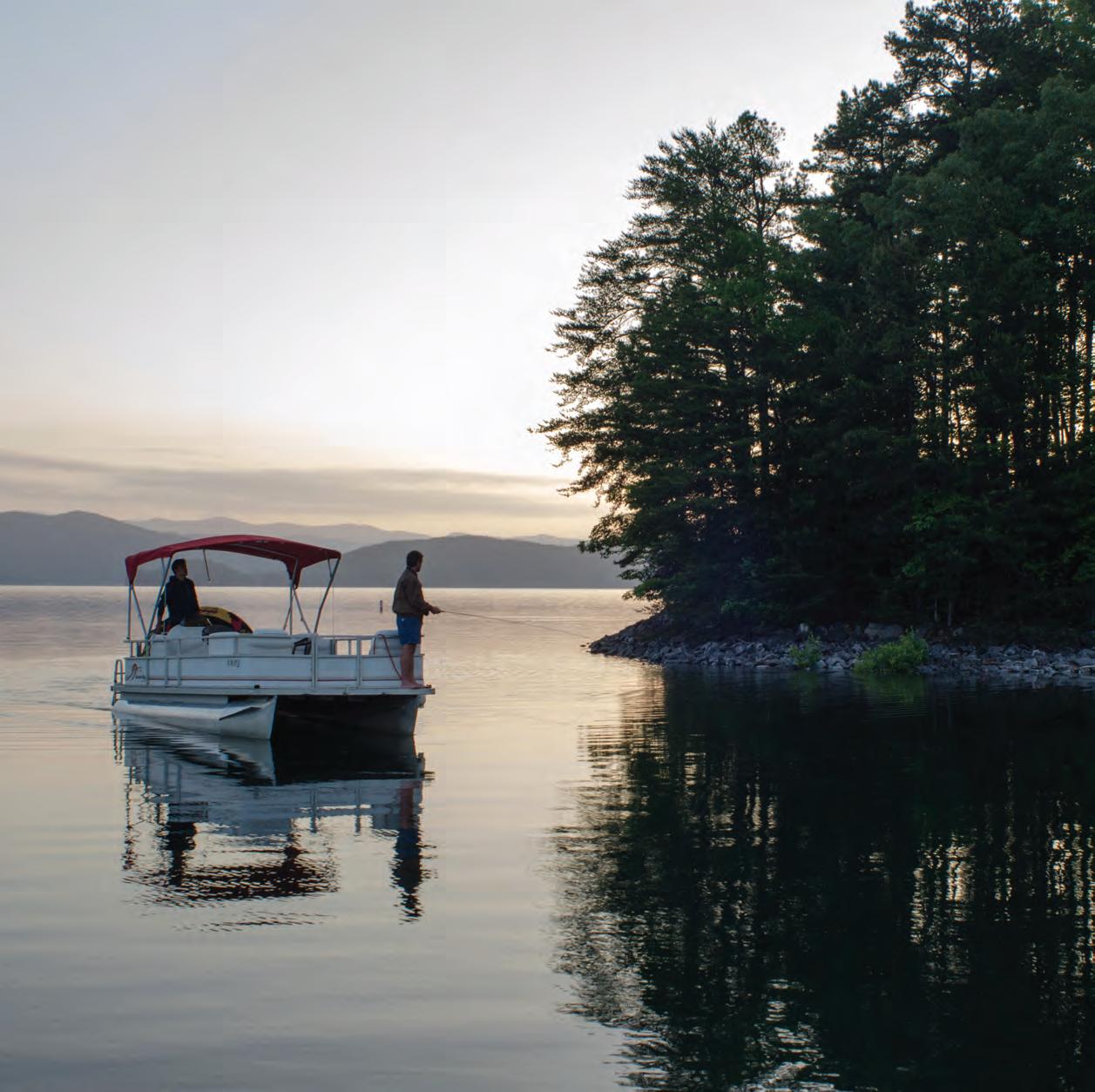











only going to get better. Trolling
smaller chicken dolphins. If lures are your thing I prefer Yozuri Crystal Minnows and honestly color doesn’t matter. Pitch around the weed lines or patches and look deeper down for the bigger Mahi. As for Tuna with all the chumming going on, I like to send down a vertical jig on 60#-80# test at least 100’ below the boat. Working your jig through the water column is a good way to fire up any kind of fish that may be lurking around in the shadows. If you have a large diamond jig I’d put some heavy wire in front of it for a chance at a wahoo. Triple Tail are amazing fish on light tackle and I recommend 15#-20# fluorocarbon and #2 Owner hook. Live
If bottom fishing is your go to joy Vermillion snappers, Groupers, and Rock salmon is my target. For Vermillion snappers I like using a 2-3 hook chicken rig mixed with cut squid and Boston mackerel. Let your weight sit right on the bottom and wait for those 2-3 light bites. Rock salmon and Groupers like to hide out in the rocks and caves, so a slip lead is what I like to use. Heavier leader line for Groupers and larger baits close to the bottom. Feel the bite and start cranking. The first 20’-30’ are the most

When it comes to offshore fishing don’t give up. There’s a lot of trial and error. Figure out what works best for you and as always keep your lines out and keep them tight.


Weall have an idea of what a good fishing spot should look like. Perhaps it’s surrounded by pristine sand dunes and native grasses and has that perfect seagrass bottom? Or maybe it’s a hidden marsh lagoon surrounded by mangroves? We spend so much time running to the prettiest spot and wonder why we don’t catch fish. Maybe it’s time to take a look at the ugly fishing spots?
I’ve found great fishing wherever great fishing occurs, and many times those locales haven’t been pretty. Earlier today, I ran the boat to several isolated bays only to find a school of nice speckled trout right behind the boat ramp. I knew the structure was right, and when I saw good sign of fish presence, I didn’t hesitate to fish close to the ramp. It was less than 50 yards to the entrance to the harbor. In fact, three other fishing boats left the harbor while I steadily caught fish.
We always feel the need to make the run to that ‘perfect’ spot. I did that this past Friday and made a 22-mile run. Granted, I knew fish were there—and I caught fish—but I also caught solid fish today less than half a football field from my parked truck.
Here’s the deal: Fish don’t know they aren’t supposed to be somewhere. As long as the location matches what they are looking for, the fish will be there regardless of what the above-surface features look like.
So what makes a good fishing spot for speckled trout, redfish or flounder? First of all, it must be in the right part of the bay system for season. No spot will produce if it’s not where the bait and fish want to be seasonally. Next, it has to have the right structure for the fish you are targeting. If you’re seeking trout, that spot better be trout habitat. It should be the right depth for trout and give them plenty of opportunities
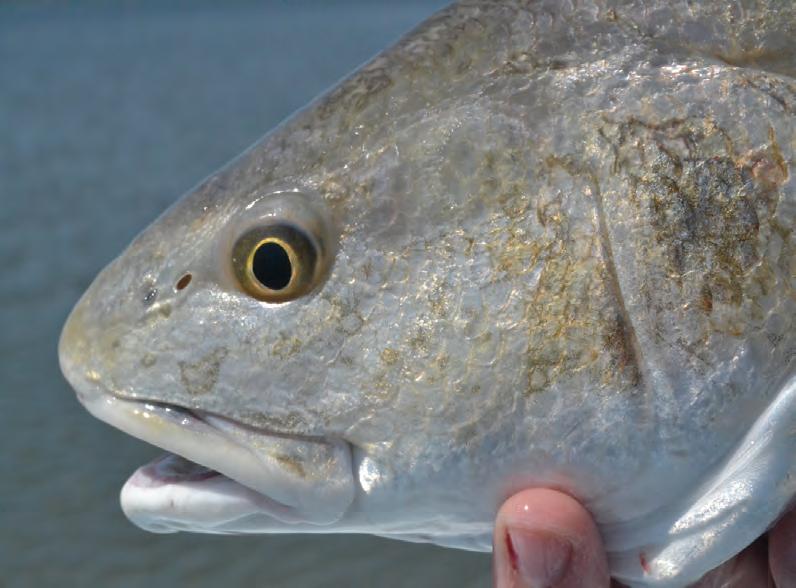
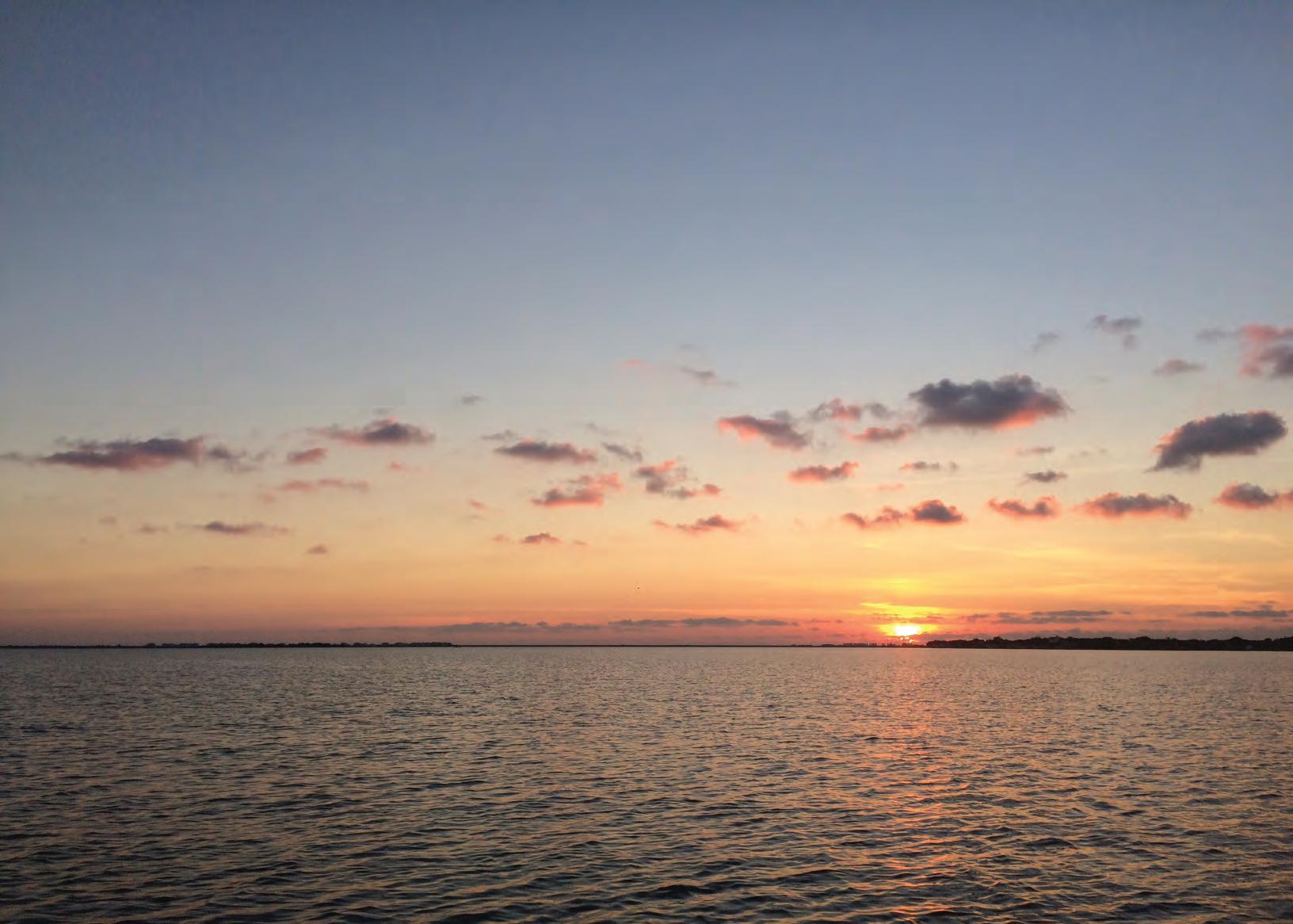 By Tobin Strickland
By Tobin Strickland
to ambush prey from below, whether it’s a mainbay drop-off, the edge of an oyster reef or the edge of a pocket in the grass. The habitat must be a match for the species you are going after... period. And similarly to the seasonal requirement, the location has to have forage.
If a fishing spot contains all the above parameters, yet it’s a little less than pristine, that can be a great spot. Take, for example, a big-trout spot I found last fall. I found this location using aerial photography, and it seemed promising. There was deep water nearby, a great oyster reef and a mud bottom. It was in the upper section of the estuary, so I knew it would fit the bill for late fall and early winter. I did wonder how the boat traffic would be… because it was in the back of the harbor. I caught fish closer to my truck than the actual run distance to the spot was.
Today’s location was similar. Did it matter to me that it wasn’t 22 miles away? Not after that first hookset; No.
Tobin created TroutSupport.com - Tech Support for speckled trout and redfish anglers who want to up their game to the next level.
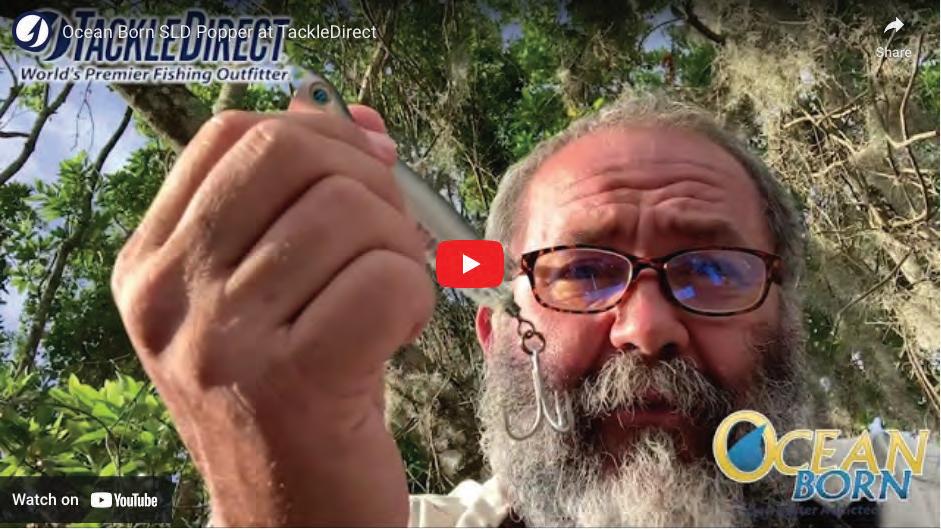
In this series on long-distance lures, we’ve covered just about everything about the cast and equipment. Now that you’ve made that super-long cast—beating other anglers’ distance by 50 feet, or maybe 50 yards—you are presenting your lure to fish that others can’t reach.
What’s next the next step?
This is where we enter the heart of the action, where things get fun and exciting. First thing first, start working your lure.
The long distance between your rod tip and the lure means more line is on the water. You will have less control of the lure’s action, and the delay between when the fish strikes and when you feel it will be longer. The hook set is also affected. Waves, wind and current all amplify this lag.
The type of lure will determine how you should alter your retrieve to achieve the proper action. Darters, heavy spoons, billed minnows, bottleneck swimplugs and jointed swimbaits are all designed to provide their own action, and they will start swimming when you begin your retrieve.
Lures that require more angler interaction will require you to adapt your retrieve to compensate for the extra distance and diminished control.
need practice to adjust the way you work a lure at distance, and by paying attention to the way different lures react, you will learn to fish them more effectively.
Now, with the current ripping and wave action pulling the line and lure side to side, there’s no way to avoid losing some control over the quality of a lure’s action. The good thing is, fish in such conditions are usually less picky and more aggressive. Still, the better the action you provide to your lure, the better your results will be.
A popper might require harder pulls to pop. A stick bait or pencil might need a slower cadence and sharper rod twitches to achieve the desired action.
These details might seem insignificant as you read this, but go give it a try on the water, preferably in calm conditions. At the end of a super-long cast, you’ll experience first-hand what I am trying to impart. You’ll
Then suddenly, the bite happens! A long belly of line influenced by current and waves increases the delay between your hook set and the moment it translates to the lure. Also, some energy will be lost. Use a wide, sweeping rod movement to set the hook when the lure is far away. This generates a long pull that provides the most energy possible to drive the hook into a fish’s mouth. Also, fish a tight drag when you’re casting for distance. I’ve seen many anglers miss fish when the drag gives line on the hook set. Be ready to adjust the drag lighter based on the power of the fish once you have it hooked.
Legendary angler Patrick Sebile is a world record holder and an award-winning designer of innovative lures and fishing gear. Check out his creations at abandofanglers.com.


Used by Bass Master Elite fisherman Brock Mosley and two time back to back Bass Master Classic Champion Hank Cherry, Dakota Lithium is the choice of champions and trusted by professional tournament anglers for those long days on the water.

The Dakota Lithium 36V 63Ah battery will allow you to fish longer with twice the power, half the weight, and four times the lifespan than your old sealed lead acid or AGM batteries –providing exceptional lifetime value. All backed by the Dakota lithium legendary 11 year warranty.
Join the Lithium Revolution now! Use the code coastalangler for 10% off on your next purchase at dakotalithium.com

Let us help you get the perfect machine for your “ME” time.
Designed to work smarter than the competition, the 1 Series Compact Tractors maximize your yard without breaking the bank. From the comfort of your seat, you’ll appreciate big performance and convenient sizes.


The affordable 1023E is easy to use and provides plenty of muscle for jobs around the yard.
From mowing and loading to tilling and digging, these compact tractors are built to make a long day of chores feel simple. When you turn the key of a John Deere 1 Series, you’ll quickly see why these tractors are the one.
EFE1963.com















Steve Hammer (419) 565-3398
ColdWater season is here, bringing some of the best fishing of the year, but also bringing the most dangerous time of year. Fortunately, with the proper gear, it’s possible to safely fish until the lake freezes. In this article, I’ll teach you how.
First, let’s get familiar with the dangers cold water presents. The most important rules to live by are to ALWAYS wear your PFD (Personal Floatation Device) or life jacket, dress for the swim, and frequently practice self-rescue. Never assume it won’t happen to you because it can, and it will. If you’re not prepared when the situation arises, you may not make it back home. It’s our families and loved ones that suffer. That is why I always practice self-rescue, kayak reentry, and frequently swim test my safety gear.

The moment you enter the frigid water, you involuntarily gasp, filling your lungs with air or water if your mouth is below the water’s surface (common when not wearing a PFD). If that’s the case, when this happens your lungs will fill with water and you’ll immediately drown and sink to the bottom. Wearing your PFD, you will most likely survive the involuntary gasp reflex but experience a dangerously rapid blood pressure spike. This can cause many potential issues including cardiac arrest. (Scan the QR code at the end of this article and listen to Michael Paoletta’s near death experience with early cold water in October 2020.)
Next, you’ll move into maximum intensity cold shock. This is 2 to 10 intense minutes of uncontrollably gasping for air in an attempt to catch your breath. Once your breathing is under control, you can now attempt self-rescue. At this point, you’ve been in the water a few minutes and the frigid water has been silently taking its toll on you, rapidly wicking away your core body temperature and causing rapid loss of your motor skills.
It’s time to attempt to re-enter your kayak. Even the most healthy and fit people will be physically exhausted at this point. Your arms and
legs won’t be working properly, and your mind is becoming foggy. Maybe you’ve never attempted self-rescue before, but how hard can it be, right? (Scan the QR code and learn Re-Entry and Self Rescue.)
The first attempt didn’t work. You try to make a second attempt, but your body won’t cooperate. All you can do now is hold onto your life jacket, and hope that somebody finds you because, if not, this is the end of the road.
Here’s how to protect yourself and prevent the scenario above: The most important piece of cold-water safety gear is your DRYSUIT. A drysuit is a waterproof outer layer with latex wrist and neck gaskets with either latex ankle gaskets or booties to create a watertight seal around your body. There are also semi-drysuit options which have a more tolerable neoprene neck gasket vs. restrictive latex neck gaskets. (Using a soccer ball inside the latex neck gasket a few days before your trip will pre-stretch it and counteract some of the strangulation feeling caused by the tight latex neck gasket). The neoprene neck gasket is not 100% watertight. If not cinched down properly you may experience a few tablespoons of water down your neck, just enough to wake you up. That being said, I’m wearing the Kokatat Hydrus Supernova Angler Semi-Drysuit in all my dry-suit testing videos.
Drysuits are designed to keep you dry, not keep you warm so you must assemble the right set of INSULATING LAYERS to wear under your dry suit to keep you warm. Proper underlayers consist of materials like polyester, merino wool, fleece, nylon, and other high-insulating synthetic fabrics. NO COTTON!! (Scan the QR Code for a video on choosing the proper underlayers)
A wetsuit can work but must be of a higher thickness. Wetsuits are designed to trap a layer of water in between your skin and the wetsuit, your body warms that water up creating a full cavity of warm water between your wetsuit and skin preventing any new cold water from entering. If you don’t have that layer of water in between
the wetsuit and your skin when you hit the water, cold water will rush into your wetsuit causing some of the same cold-water dangers. A wetsuit can protect you from the frigid waters when primed with warm water, but it may not be the right fit for the kayak angler.

Located with Sandusky Bait Co @The Shelby Street Public Boat Ramp 101 Shelby Street Sandusky, OH 44870
Some last-minute tips, tricks, and advice:
• Carry two pairs of gloves in case one set becomes wet.
• Stuff hand warmers inside your gloves for an instant warm-up after that monster fish catch.
• Assemble an emergency cold water survival dry bag containing a full change of clothes, socks, and winter hat as well as an emergency space blanket and multiple ways to start a warming fire.
• For extremely cold days, stick an extra-large “HotHands” pad in between your base layer near your chest. Stuff hand warmers under your wrist cuffs to warm up the blood flowing to your hands keeping them functional.
• Using antiperspirant on areas where your body sweats a lot helps keep you dry and warm throughout the day.
• Cheap underlayers can be found at thrift shops by choosing the right fabrics.
Neoprene baklavas/neoprene facemasks work wonders.
• Take the time to check out all the videos via the QR code below as they’ll make you better prepared and teach you what you need to know to survive and make it back home to your loved ones.

And lastly, swim test your safety gear often! A failure could cost your life. If you’re not able to justify the expense of buying a dry suit for yourself, then do it for your family. They’re the ones who’ll suffer long after we’re gone.
Fishing is life, but SAFETY comes FIRST!!
Chuck Earls (216) 296-9157 lakeeriekayakfishing.com
time…flounder time! The fall migration typically reaches its peak in November along the Gulf Coast and more flounder are sure to reach their spawning grounds this year. Louisiana has joined Texas and Florida with their closed season during the peak of the run. However, the fact that you can’t keep any flatties during this time doesn’t mean you can’t catch them.
Flounder will be migrating into the Gulf, so the obvious ambush areas will be around passes that lead to open water. The flounder will position themselves in different areas based on the tide level and current strength.


In addition to using their burying-in-the-sand ambush technique, they also like to utilize structure in a couple of ways.
First, any object that protrudes above the bottom is a great ambush point. This offers a current break for forage fish to gather directly above a buried flounder, which makes for an easy meal. Objects such as bulkheads are also great ambush points. Flounder like to position themselves against the solid barrier. I think this can be for two separate reasons depending on what other factors are at play. As mentioned above, it could be a current break, especially if the bulkhead has a corrugated shape. When a flounder settles against a bulkhead, its prey has fewer directions in which it can flee, allowing the flounder greater odds of capturing it. When targeting flounder, never pass up a bulkhead.
Second, flounder can be caught on a variety of lures and live bait if you keep it in contact with the bottom to increase your odds for a strike. On the live-bait options, a frisky mullet will produce larger flounder, so if you want to increase your opportunity of landing a trophy, this is the way to go. I prefer to fish with lures and lean heavily on the paddletail style. Twitching these hard along the bottom sends a pulsating sound and vibration that really grabs their attention. Jerk-style soft plastics and bucktails can also be effective worked in the same manner.
If I had to pick a tide to maximize my time on the water, I would choose a medium-flow outgoing. Although there are no set rules that fish always follow, I feel flounder feed more on their way out to the Gulf and utilize the current to ease their journey. During the incoming tide, I feel they bury themselves rather than fight against the current.
Don’t let the closed season discourage you from targeting flounder during this migration. It will have its advantages. Going forward, we will undoubtedly have a larger flounder population, but the instant gratification will be a lot less traffic in our favorite flounder spot! I will use the closed season to target a new personal best this season, and so should you.
Okruhlik is the inventor of Knockin Tail Lures®, Controlled Descent Lures™, and the owner of www.MyCoastOutdoors.com.




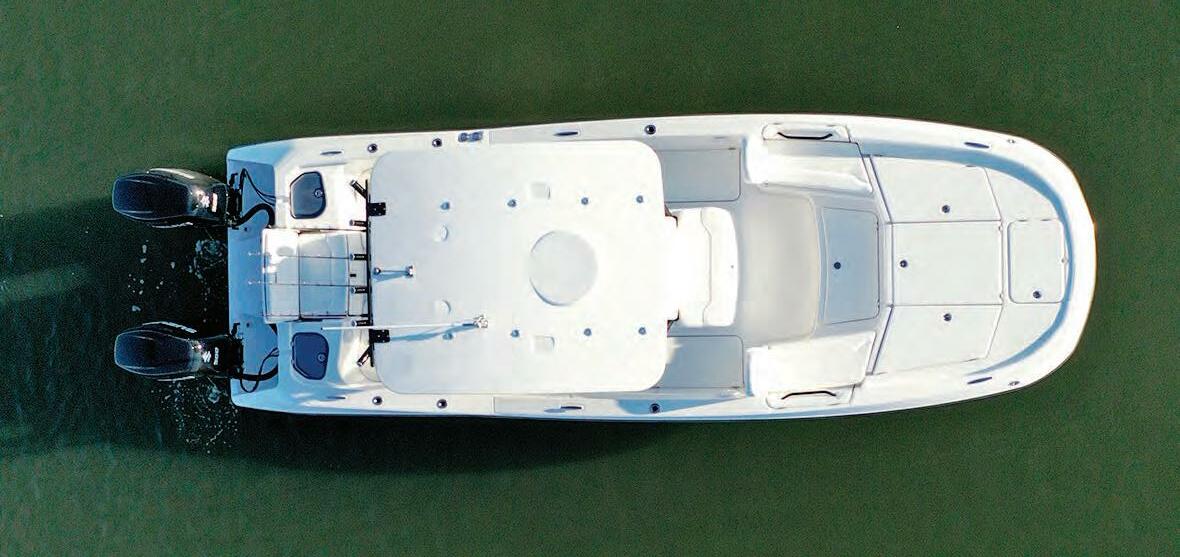
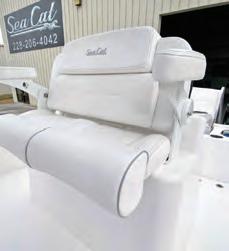


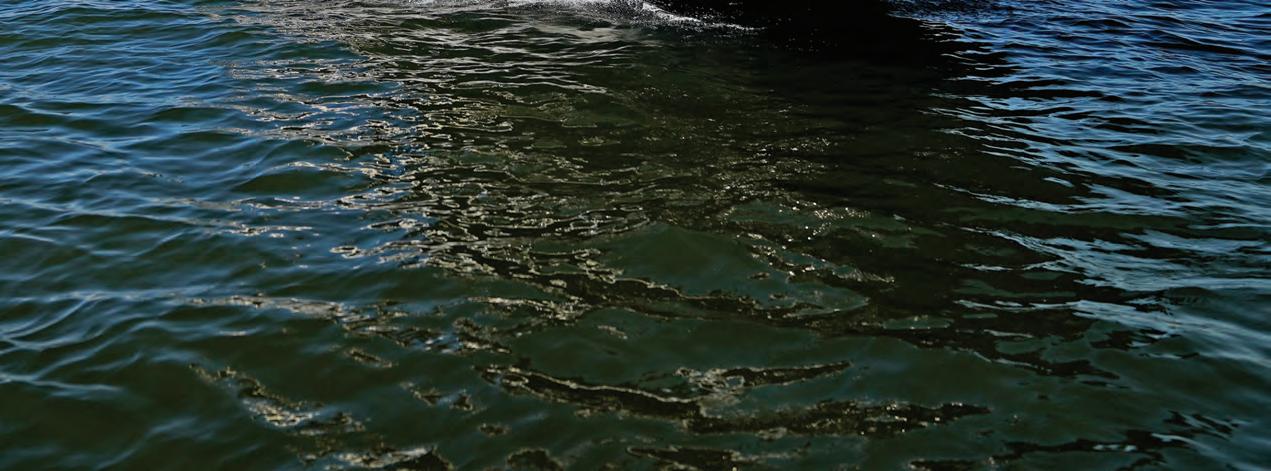
 By Thatch Maguire
By Thatch Maguire
debate over which hull design is preferable (mono-hull vs. dual-hull) has been battered around for decades. Most cat-hull owners are very familiar with mono-hulls. My suspicion is that many mono-hull enthusiasts may not necessarily be familiar with the attributes of a dual-hull vessel.
Forrest Munden and Charlie Henderson are very familiar with dual-hulls. They’re the people behind Sea Cat, one of the smoothestrunning, most fuel efficient and versatile boats on the water. This boat thrives in a 3- to 5-foot chop. Sea Cat owners share the experience of often being the only boats on the water during choppy bad weather days. Dual-hull boats, and Sea Cat in particular, do not pound… ever! Remove pounding from your boating experience, and you’ll see how much more enjoyable your time on the water becomes. You’ll also be out there running comfortably when conditions are too rough for most boats.


Before you allow your position on the monohull vs. dual hull debate to be etched in stone, I strongly recommend you take a ride, preferably on a rough day, in the legendary Sea Cat. I predict you’ll be instantly convinced of its benefits.
The thing most first-time Sea Cat passengers do is to hold on to a railing and brace for a pounding that never occurs. You can see it in the tense position of their feet, legs and arms as they hold on to the rail. It’s a fairly standard mono-hull position. They are accustomed to the pounding. They’re prepared for it, anticipating it... but on the Sea Cat it never occurs. Never.
It’s actually pretty funny to see the look on a Sea Cat passenger’s face when they finally realize there’s no need to brace. That’s also when a smile spreads across their face. They’ve settled the debate.


closures for bottom fishing in the Atlantic were removed from consideration by the South Atlantic Fishery Management Council (SAFMC) at its September meeting in Charleston, S.C. Public outcry before and during the meeting was overwhelmingly against the management measure, which was being considered to address red snapper release mortality.
The SAFMC received more than 1,000 online written comments mostly opposed to the closures. At the meeting, the council heard from charter captains, recreational anglers, regional business leaders, boat and fishing gear manufactures and Florida Congressman John Rutherford, all who spoke out against such a drastic measures.
The Council was recently informed that the Atlantic red snapper population is potentially larger than it has ever been. This is the result of an intense rebuilding plan implemented in 2011 after stock assessments revealed the fishery was severely overfished and undergoing overfishing. Red snapper harvest seasons for recreational anglers have been all-but nonexistent since then, and the population has come roaring back.
“The red snapper recovery should be considered an incredible conservation success story, but it is becoming another example of the shortcomings in federal fisheries management law,” said Trip Aukeman, advocacy director for Coastal Conservation Association Florida.
The situation is similar to the draconian measures anglers saw for more than a decade in the Gulf of Mexico red snapper fishery. Federal law forces fisheries managers to act on the “best available data.” Fishing communities pay the price for unnecessarily strict management, and the Atlantic fishery is locked in what has been referred to as a “recovery trap.”
NOAA Fisheries holds that goals for rebuilding have not been met and there is a
snapper means anglers targeting other bottom fish have more encounters with snapper, which increases the number of fish that die upon release.


“It’s a situation known as a ‘recovery trap,’ which occurs when a fishery recovers faster than NOAA’s models expect and federal law treats subsequent increased encounters with a healthy stock as an overfishing crisis,” reads a CCA National press release.
NOAA’s data collection methods have been called into question before, most notably during the Gulf of Mexico red snapper dispute, when the independent Great Red Snapper Count showed there were three times as many snapper as the
numbers being used to manage the fishery. Now, NOAA’s discard mortality data is also being questioned, and a similar independent stock assessment is being conducted in the Atlantic.
At the meeting, SAFMC members were quick to oppose area closures. The council is moving forward to work on other alternatives.
“Recreational fishermen can certainly do their part in reducing release mortality,” said Council Chair Mel Bell. “We’ve heard from business and industry leaders and will depend on their support as we move forward. If you educate fishermen, I think they will do the right thing. I’ve watched this happen at the state level with amazing results.”
For more information, go to safmc.net.



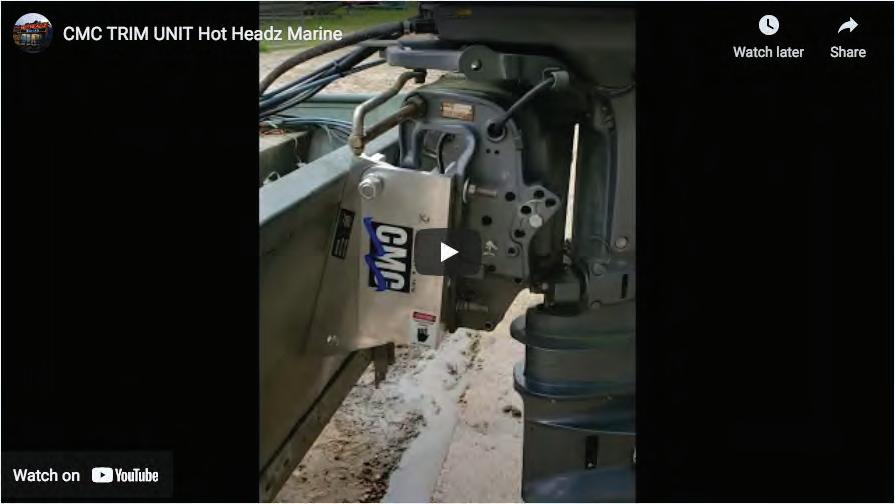
The recreational fishing and overall boating communities are in an uproar over a proposed rule put forth by the National Marine Fisheries Service. The North Atlantic Right Whale Vessel Strike Reduction Rule is intended to do exactly what it says: reduce boat collisions with endangered right whales, yet boating and fishing industry leaders are crying foul at a lack of stakeholder engagement during the year-long process to draft the rule.
The Center for Sportfishing Policy says the rule would cripple recreational fishing and boating in the Atlantic while doing little to protect right whales.

The proposed rule would broaden the current 10-knot (11.5 mph) speed restriction to include vessels 35 feet and longer (down from 65 feet); expand go-slow zones from discrete calving areas to essentially the whole Atlantic Coast out as far as 90 miles,
and extend these zone restrictions as long as seven months a year.

“Protecting right whales is urgent, and we are ready to do our part. NMFS’ failed due diligence excluded from the conversation America’s recreational anglers and boaters –the most affected stakeholders. The agency needs to get it right,” said Jeff Angers, president of the Center for Sportfishing Policy. “Based on actual interactions between recreational boats and right whales, the proposed restrictions on vessels 35-65 feet are unjustifiable, ineffective and unnecessarily costly to America’s economy.”
The proposed rule has been in development for more than a year, yet NOAA’s Office of Protected Resources did not conduct formal engagement with stakeholders. A pause would allow time for additional analysis and potential new alternatives to be developed in collaboration with the recreational fishing
and boating industry.
“NOAA’s proposed rule unfortunately underestimates the very real economic impacts on the recreational boating and fishing industry, the largest contributor to the nation’s $689 billion outdoor recreation economy. The rule will bring the vast majority of boating and fishing trips along the Atlantic Coast to a screeching halt, impacting millions of Americans who go boating each year,” said Frank Hugelmeyer, president of the National Marine Manufacturers Association. “We urge the agency to pause its rule making process and engage with our industry to determine a better path forward that protects the North Atlantic right whale and the health of the recreational boating and fishing industry.”
For more information, visit www.sportfishingpolicy.com.
 WATCH VIDEO
WATCH VIDEO

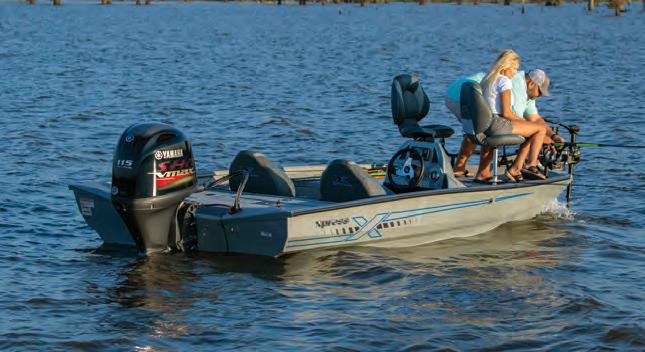


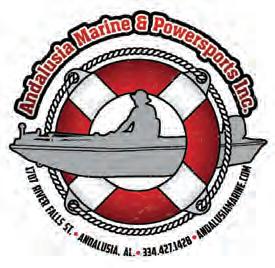

888-800-9794 | info@vidmag.com www.VidMag.com
The Angler Video Magazine connects fishing and boating enthusiasts with industry news and shared community interests in a unique, industry-first format — a video magazine. Sent to over 3.2 MILLION licensed anglers, The Angler Video Magazine is provided to its readers for FREE. No subscriptions or payments are required for viewing.
Support The Angler Video Magazine’s mission to provide FREE content to the recreational fishing and boating communities and industries throughout the world by sharing, subscribing and advertising.
